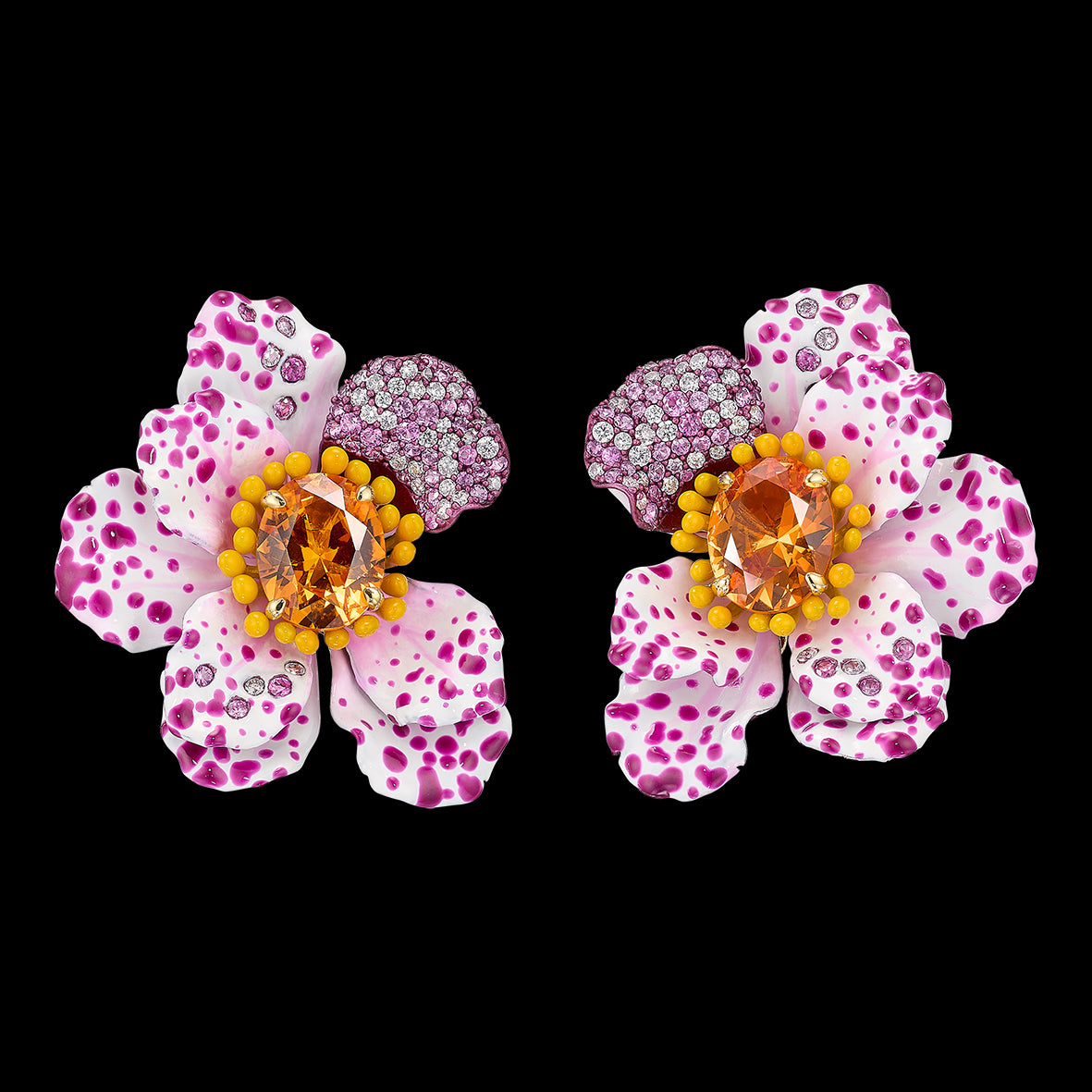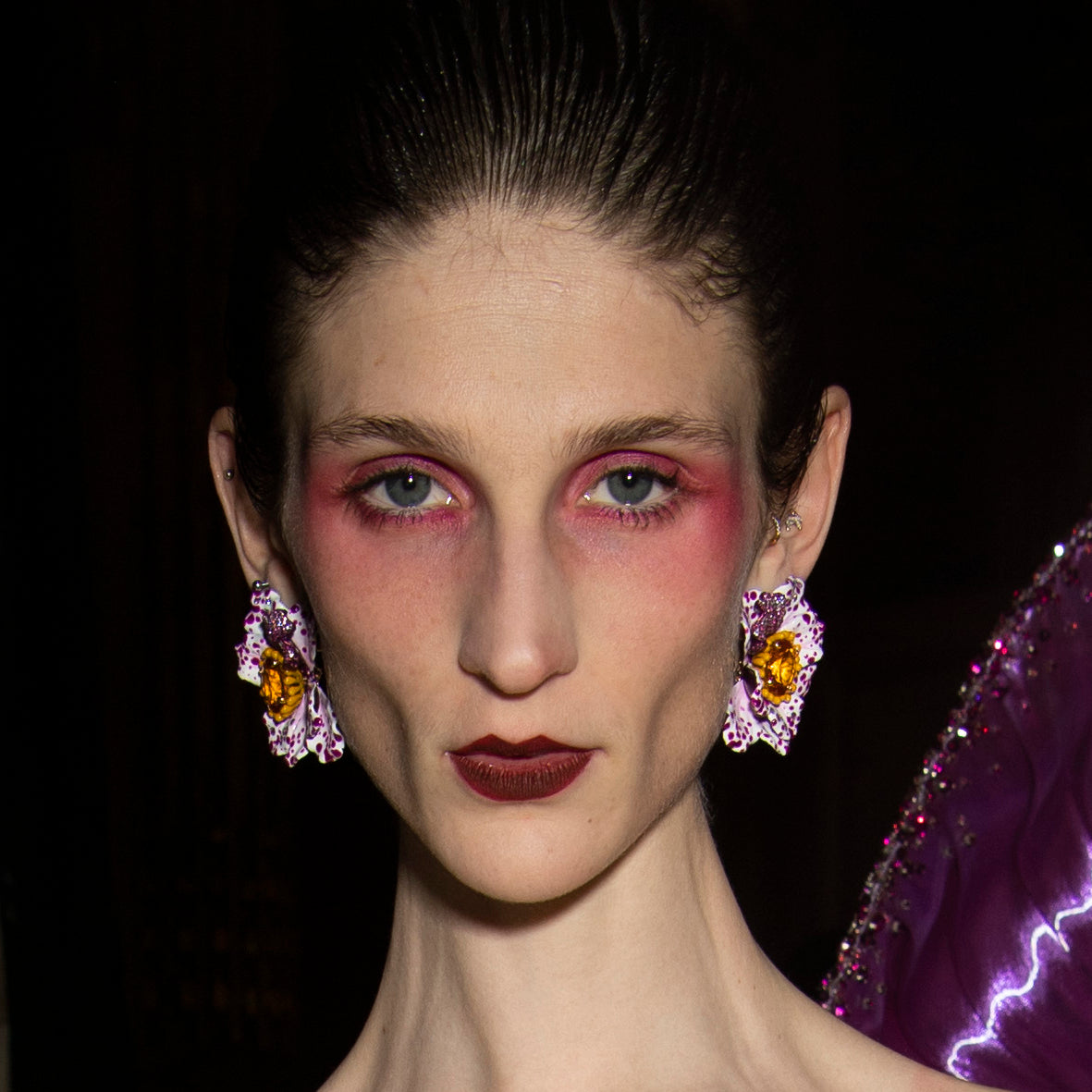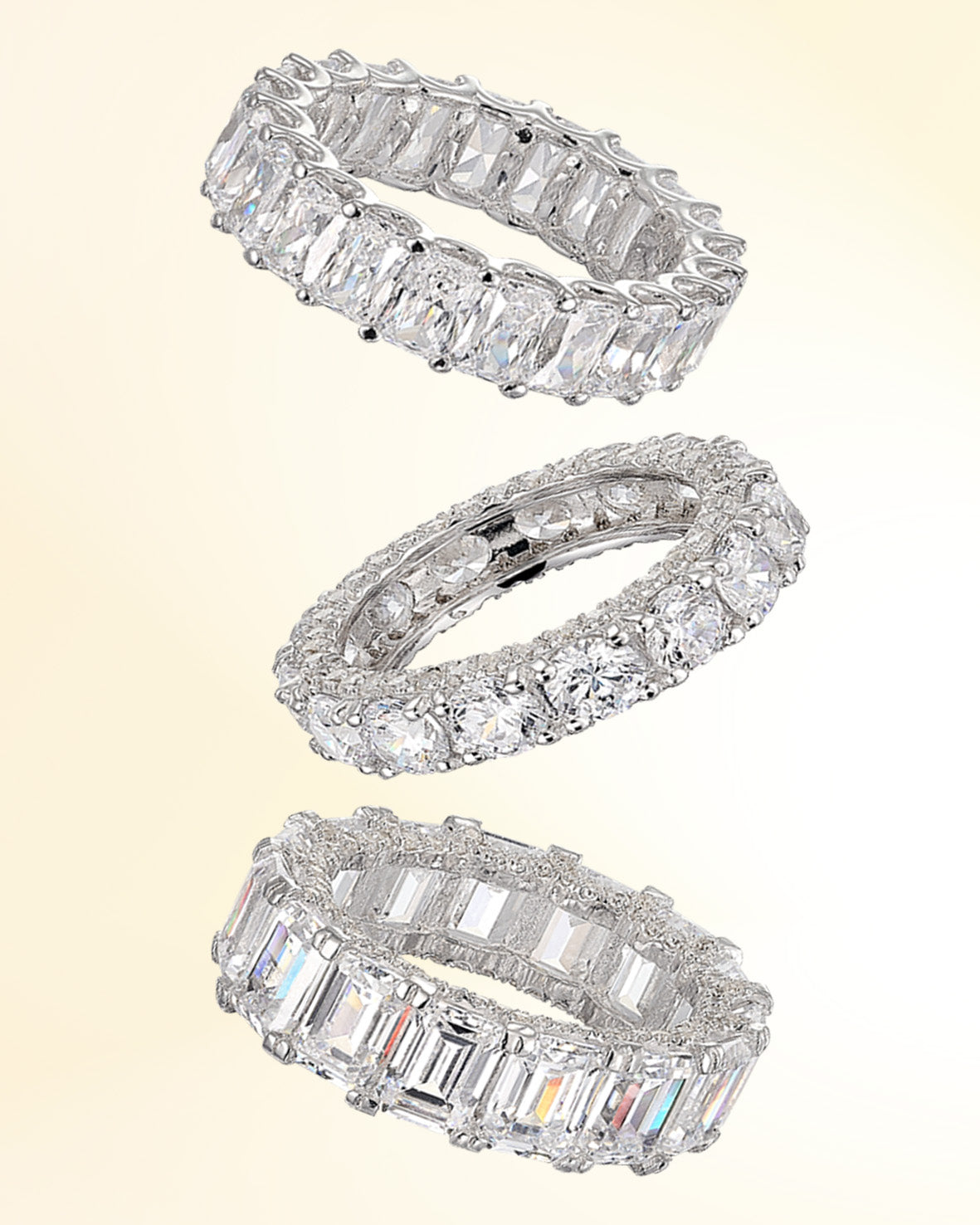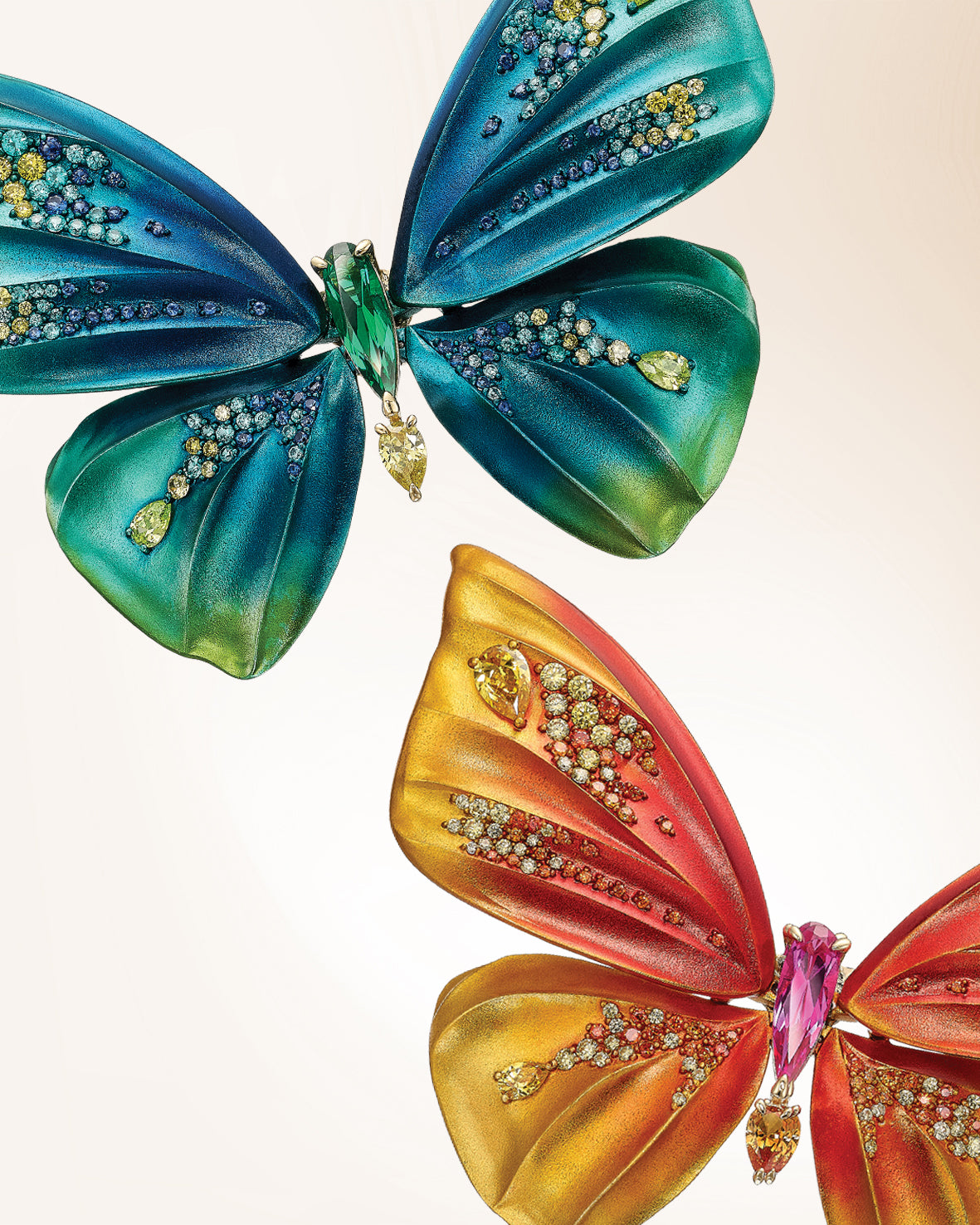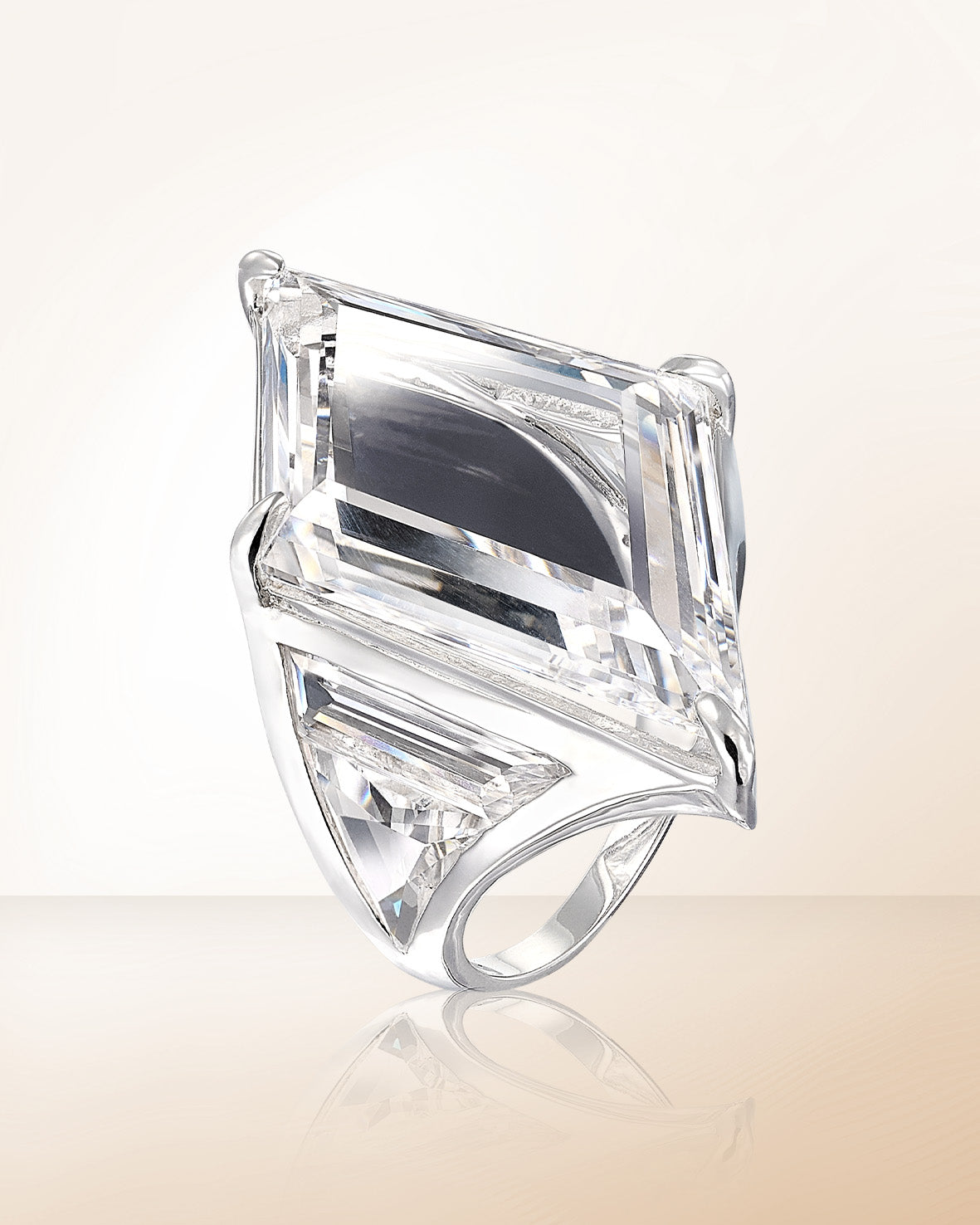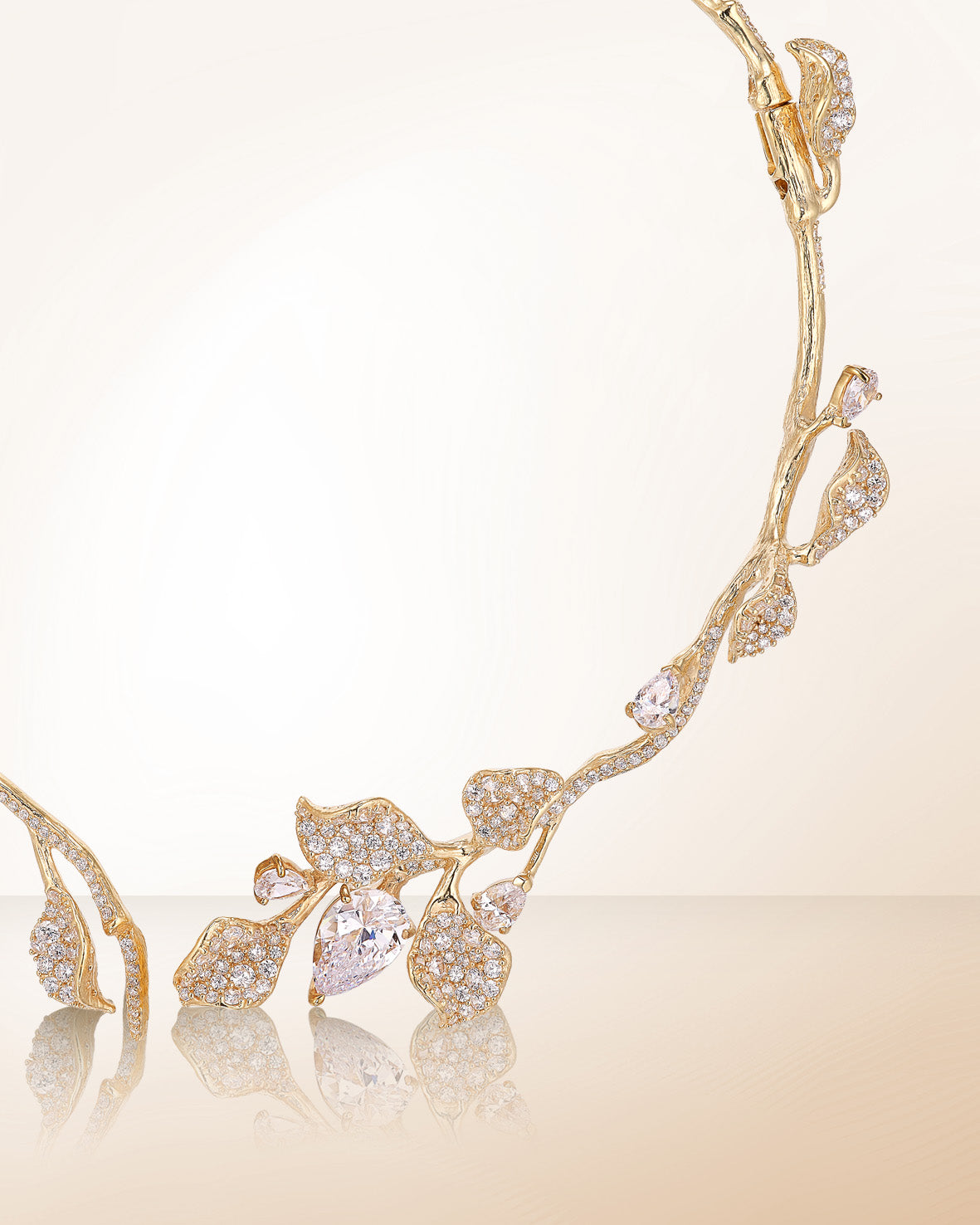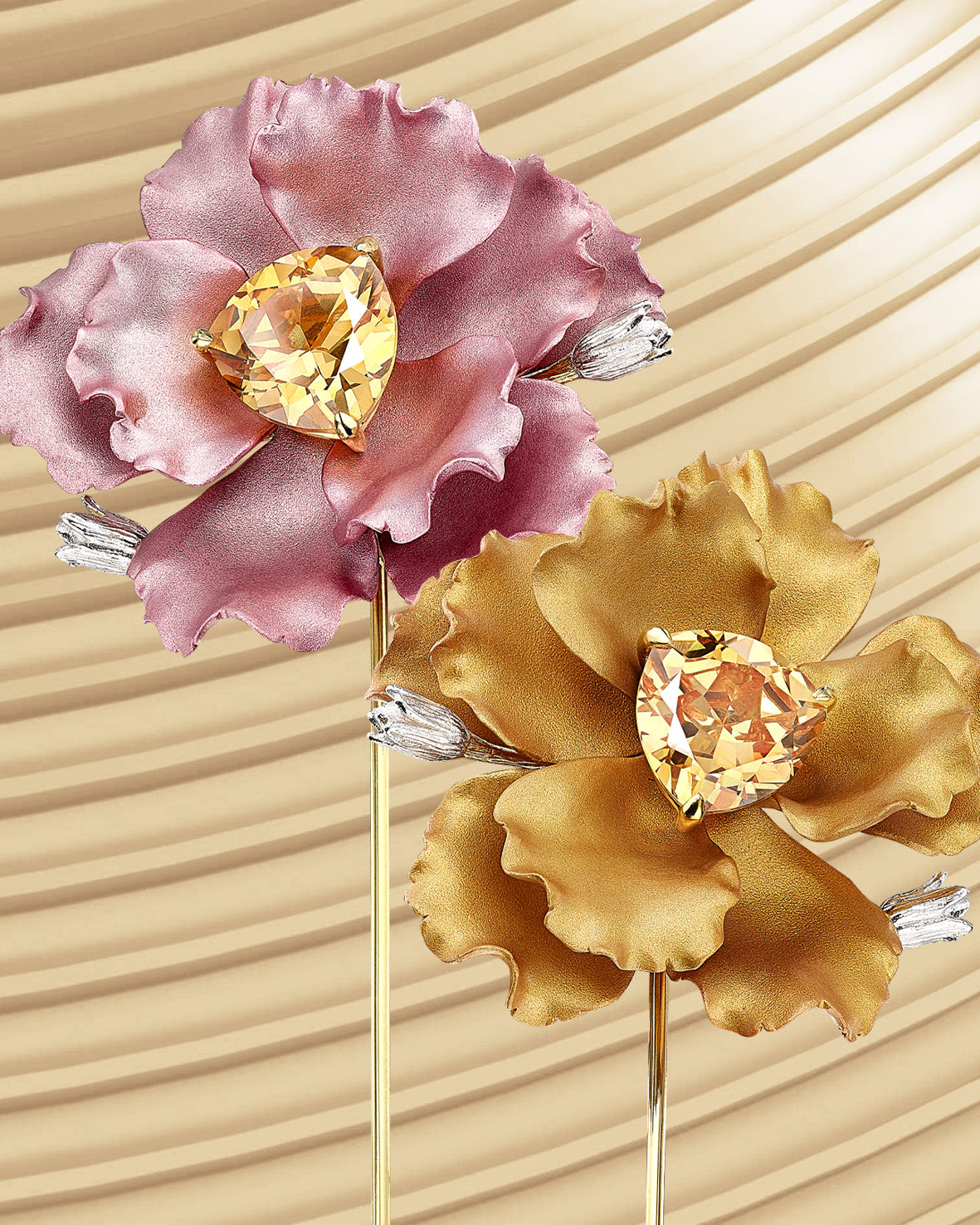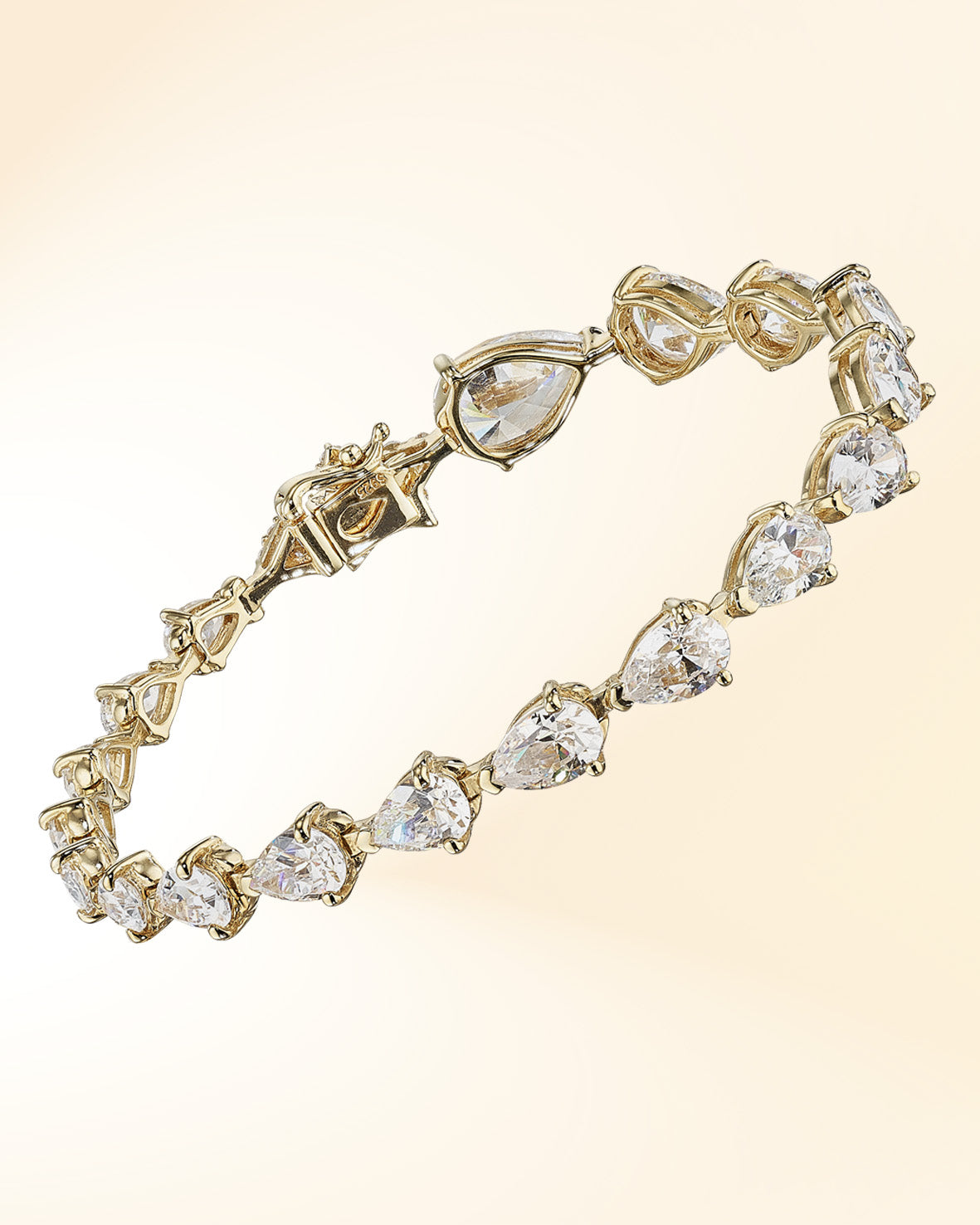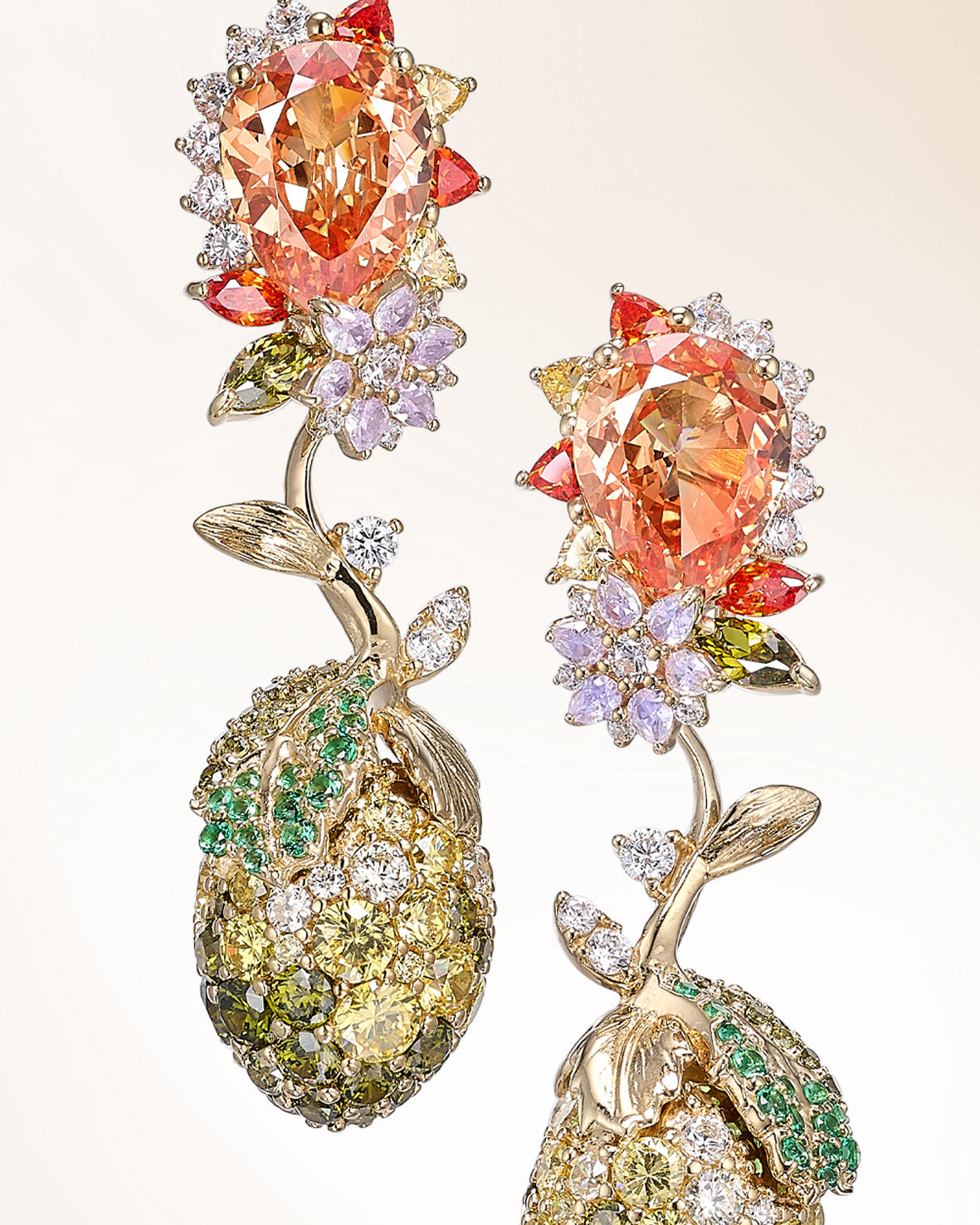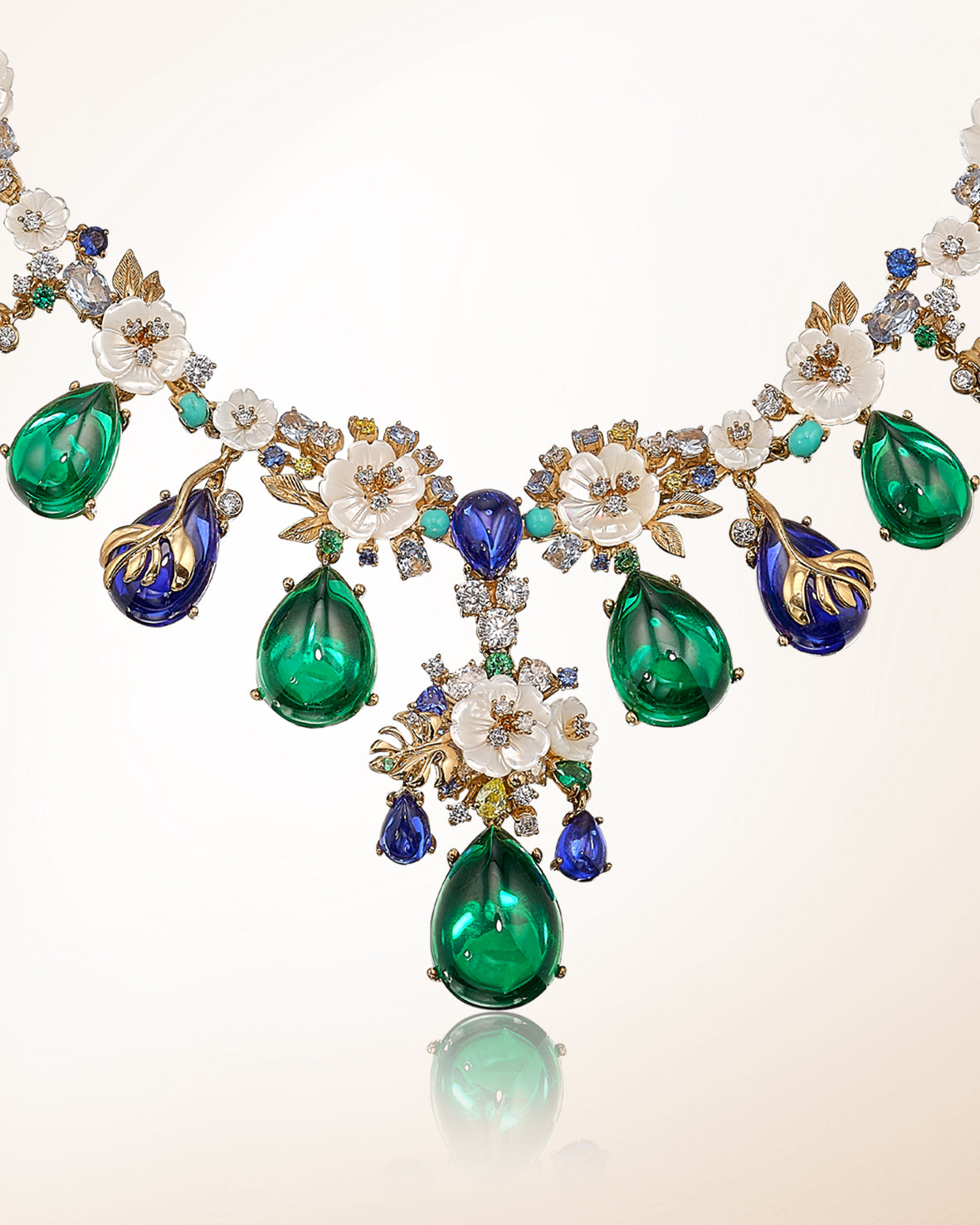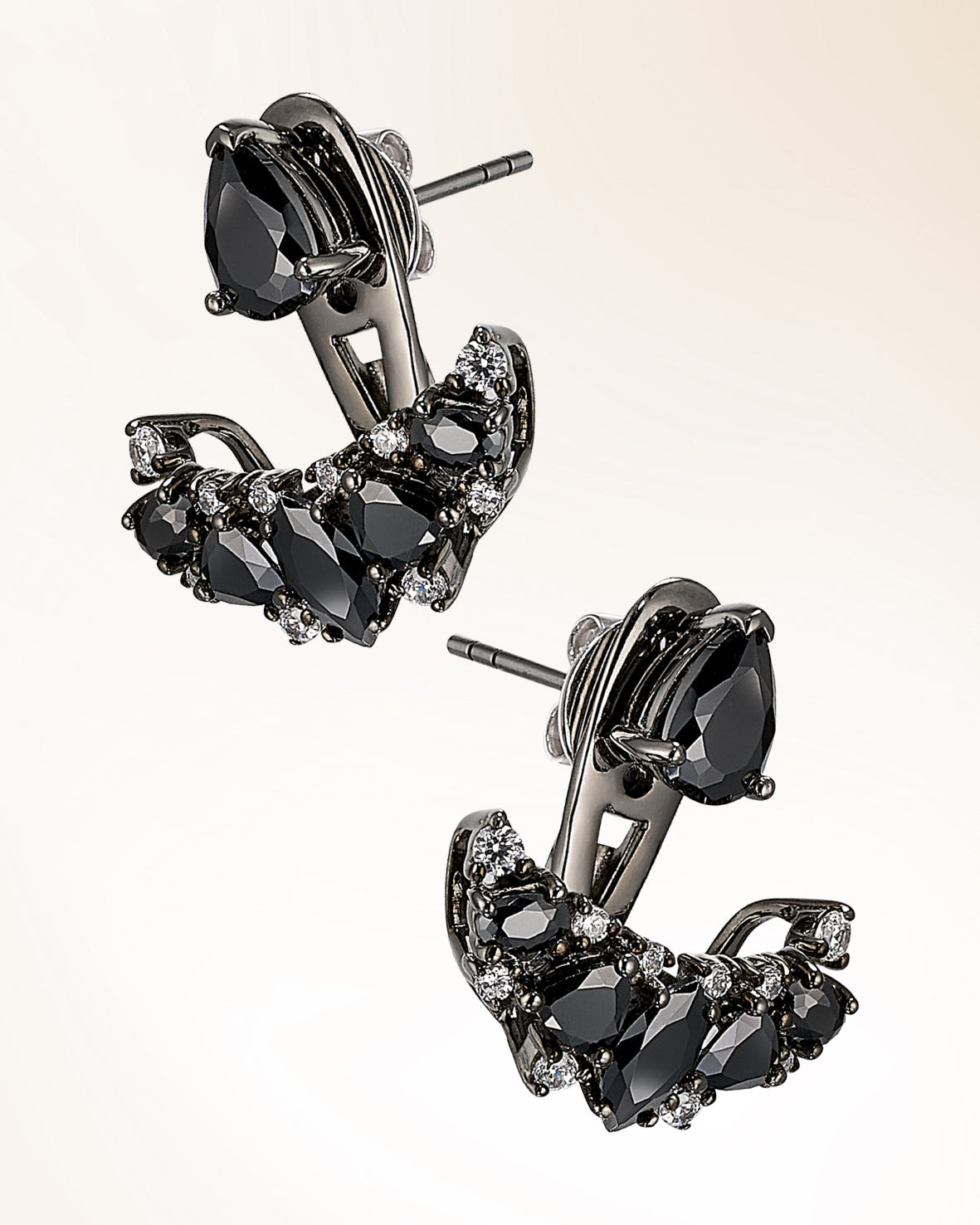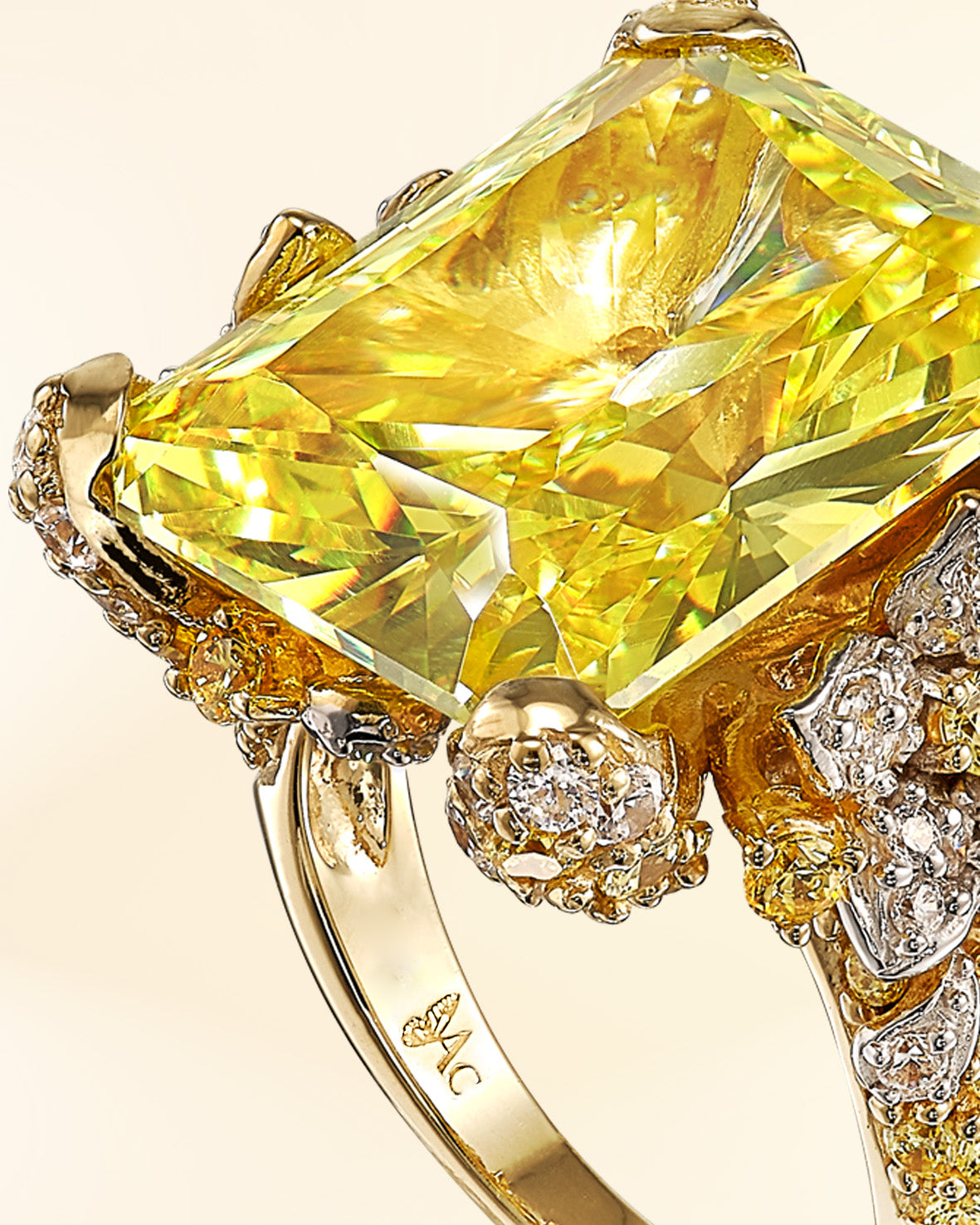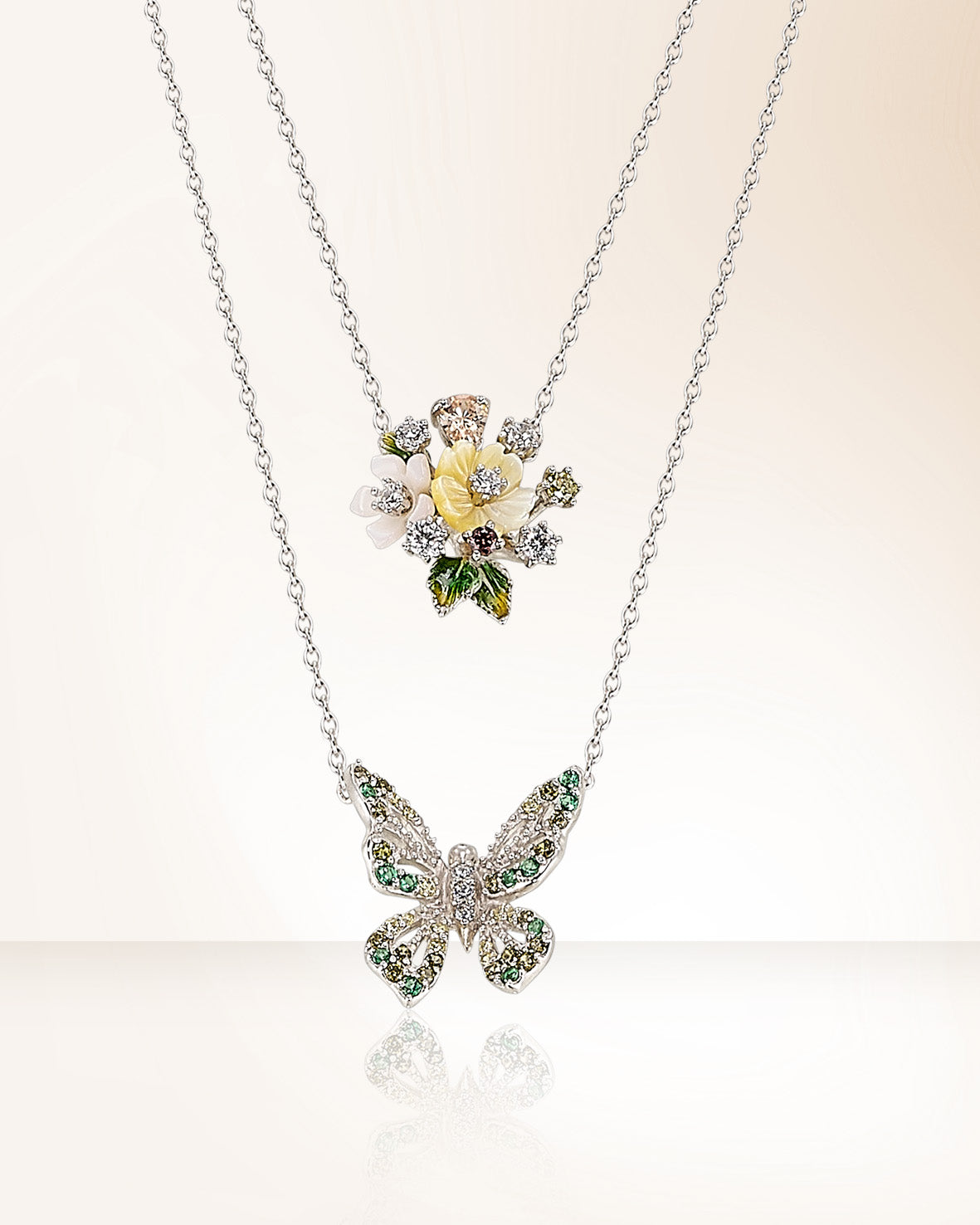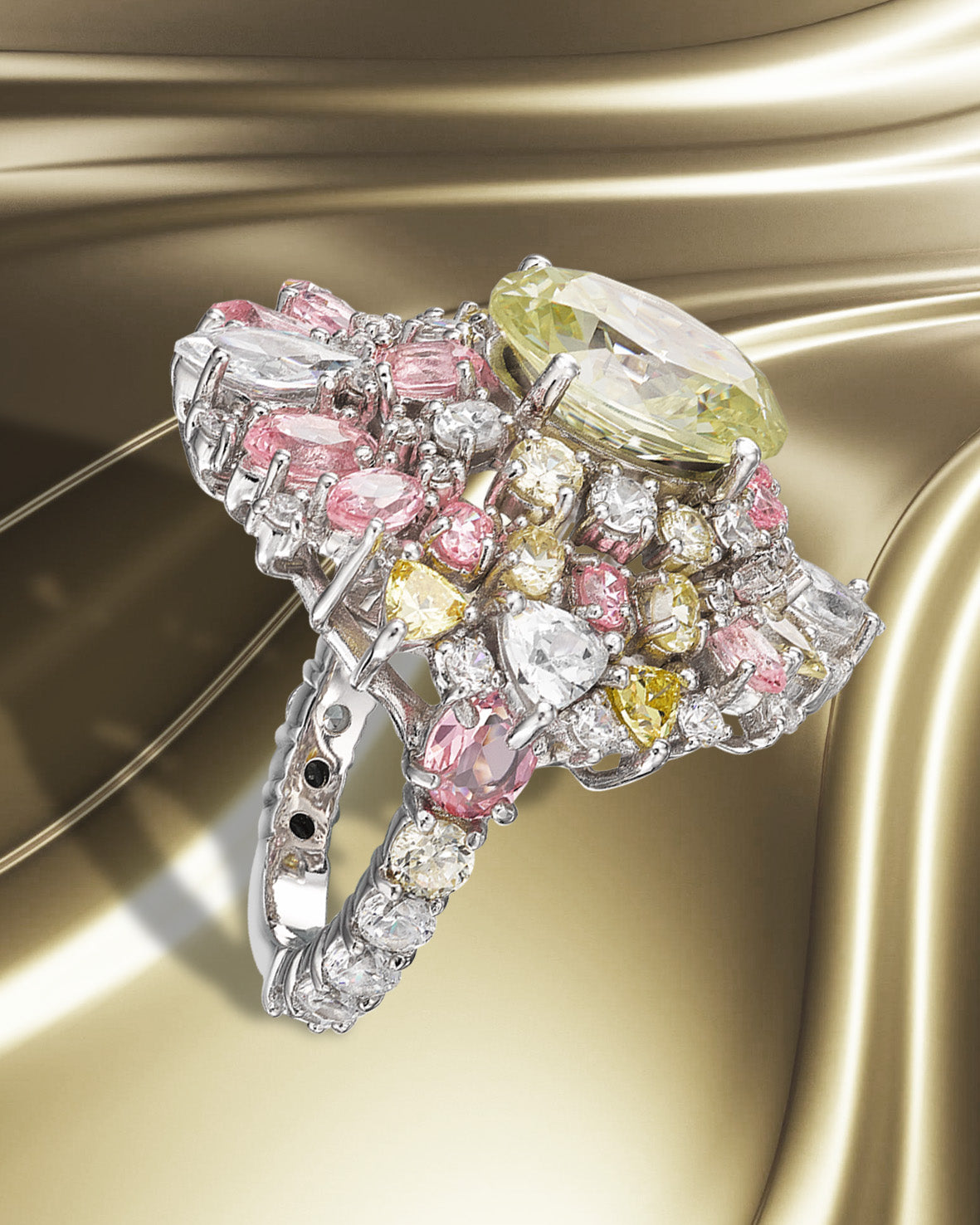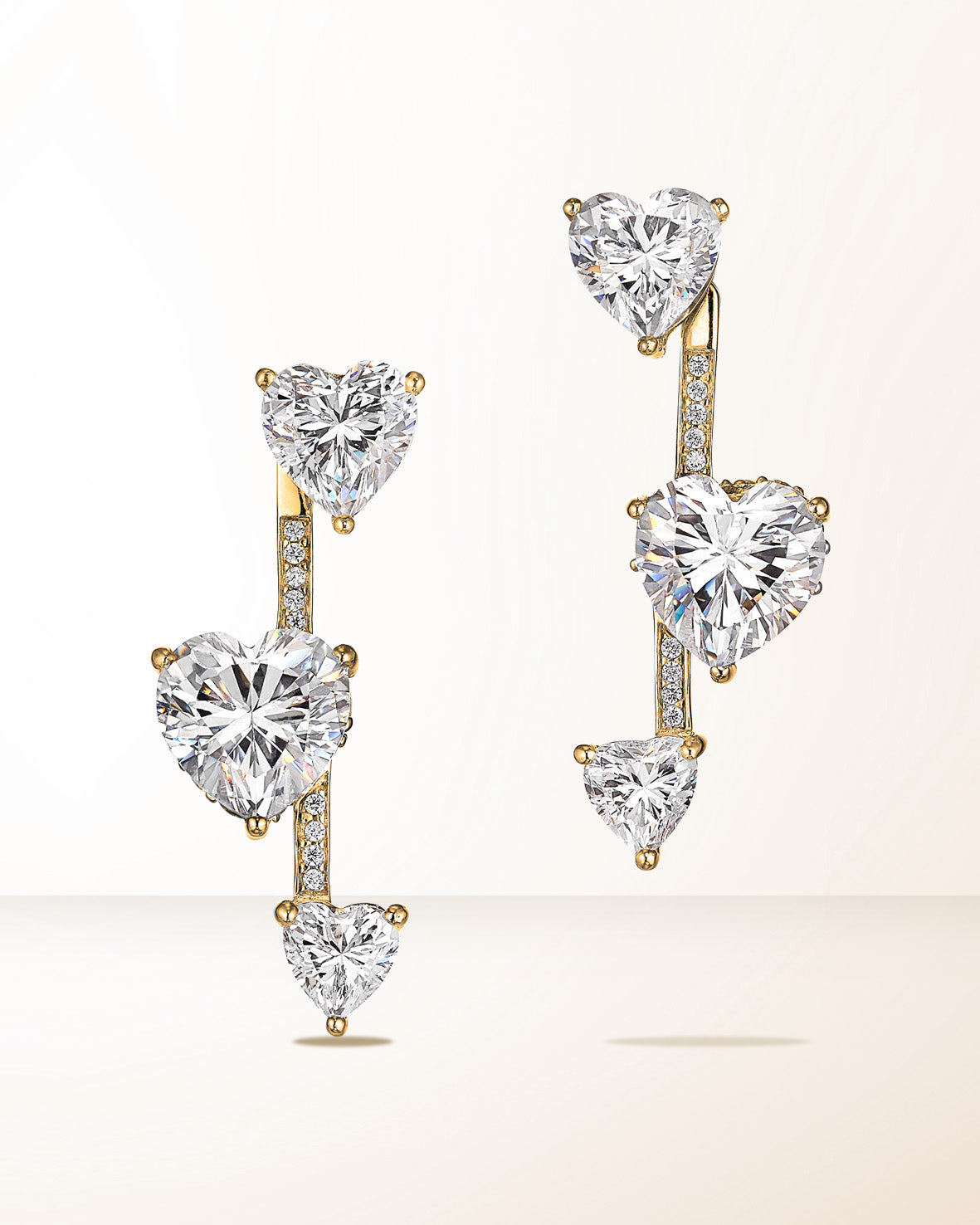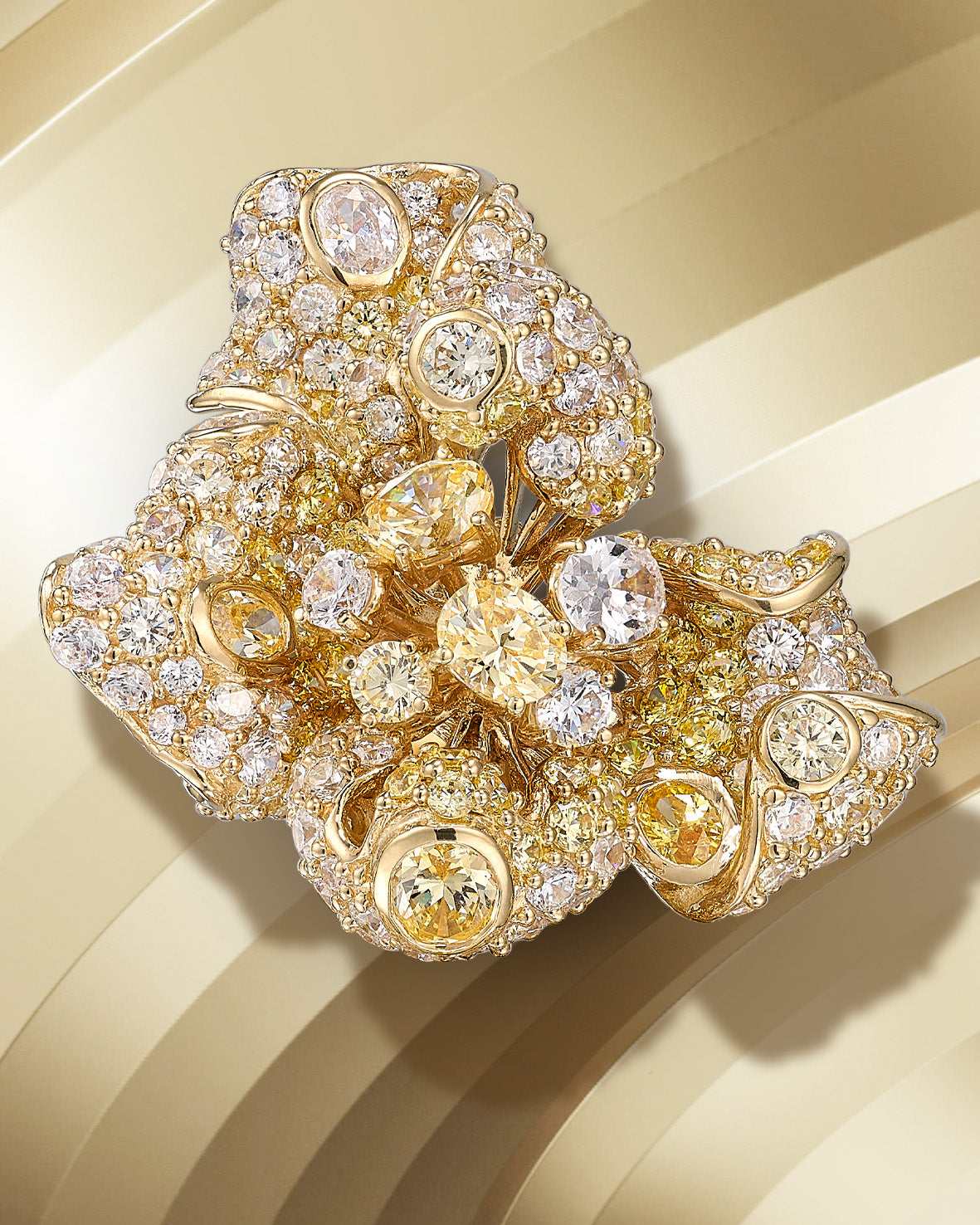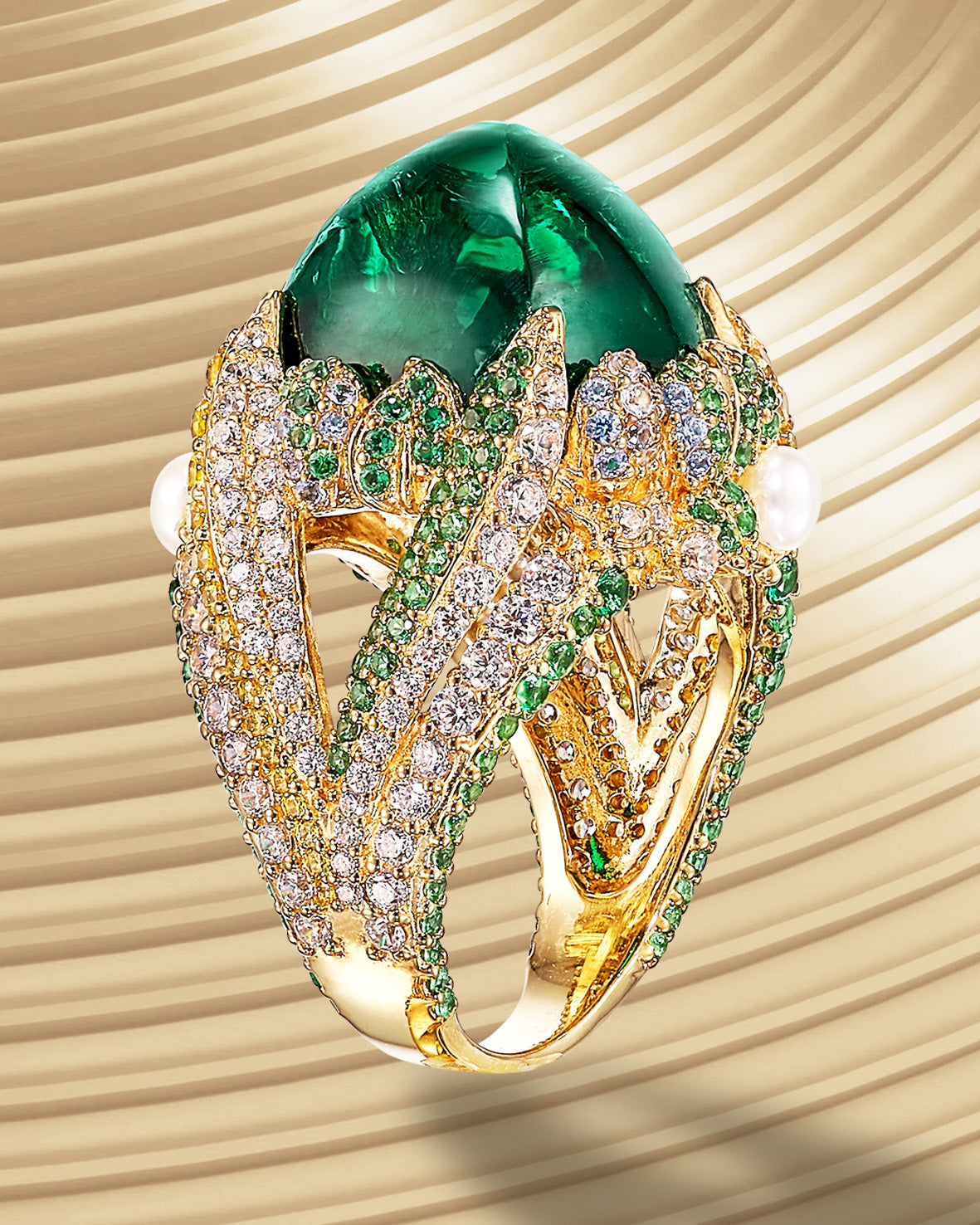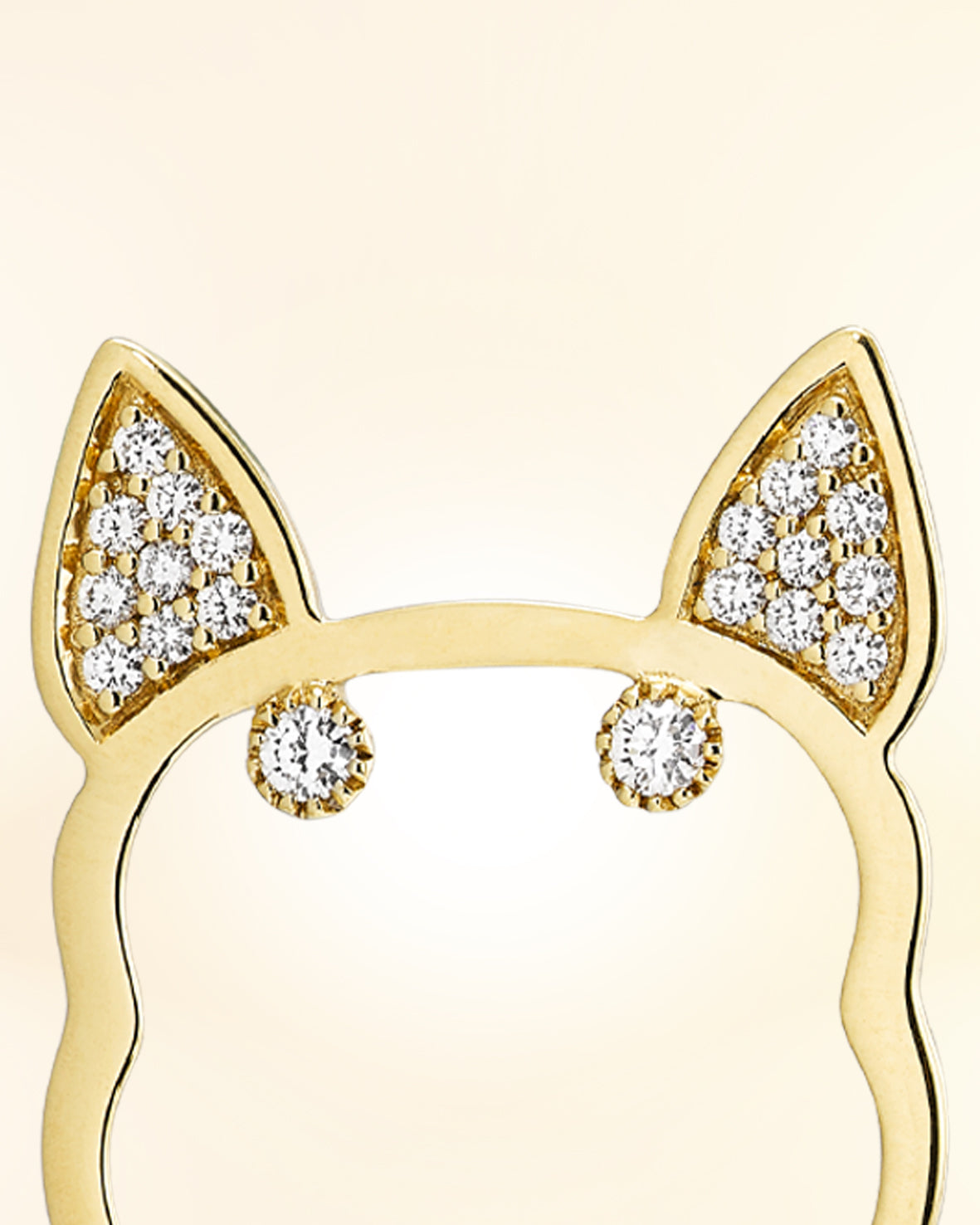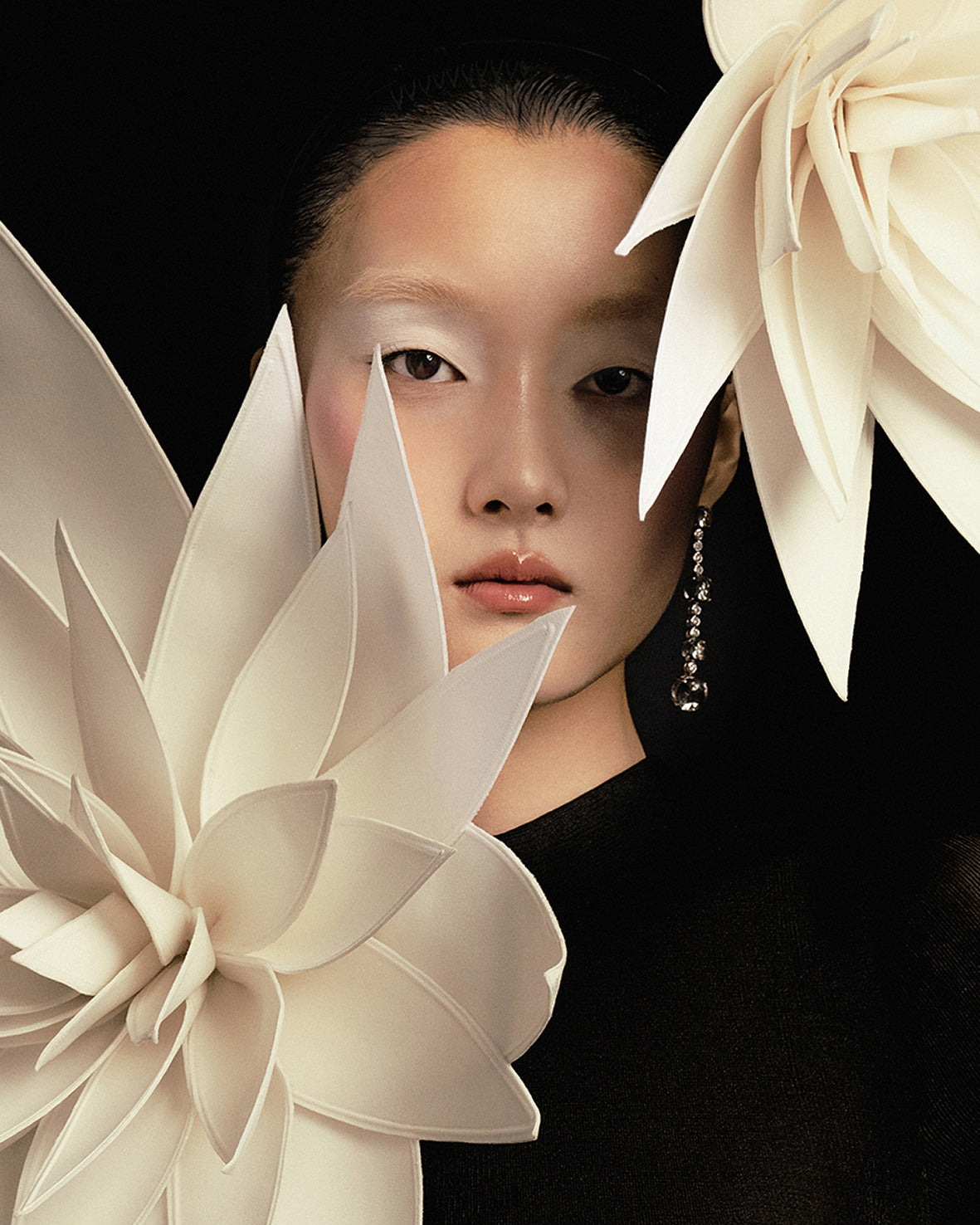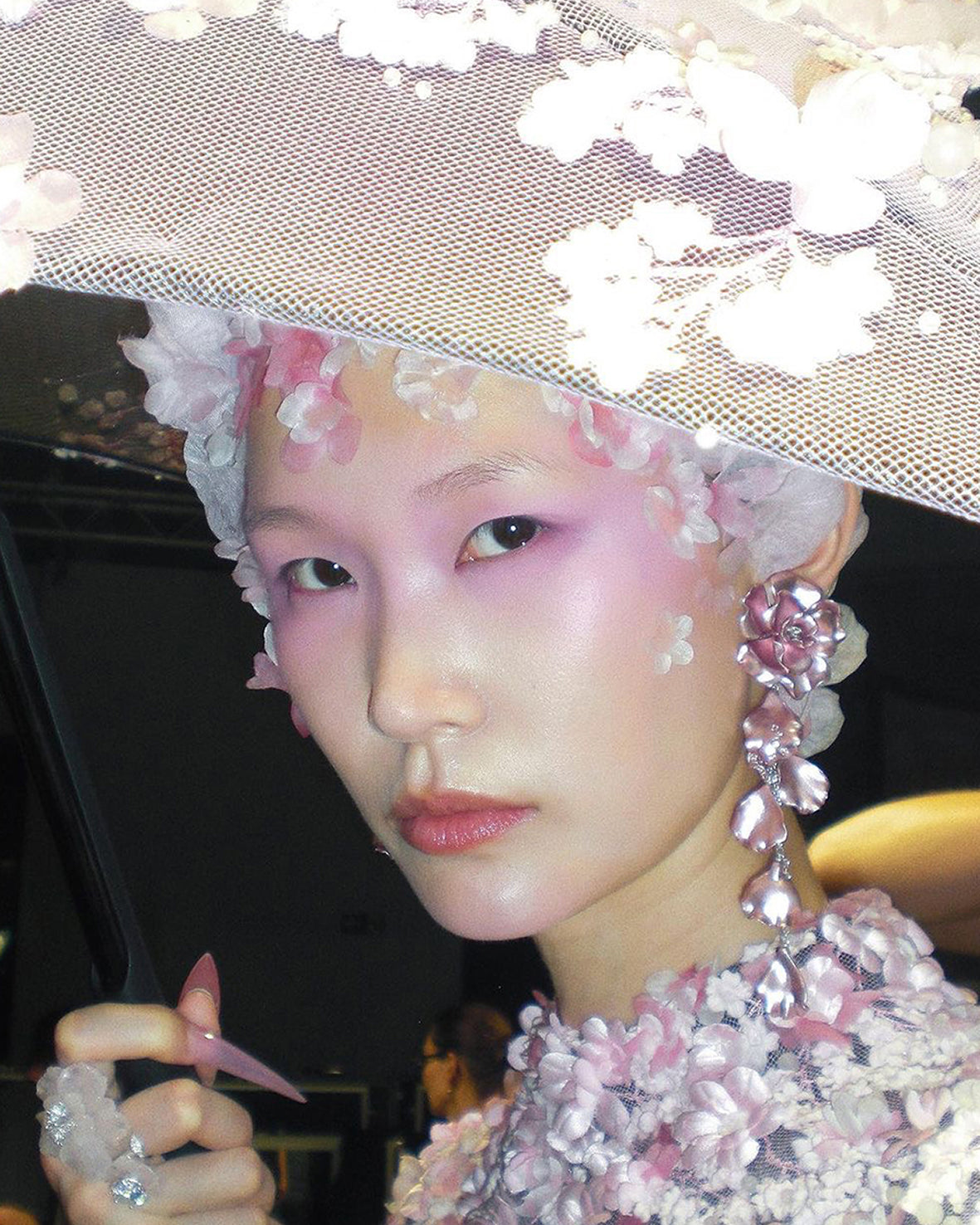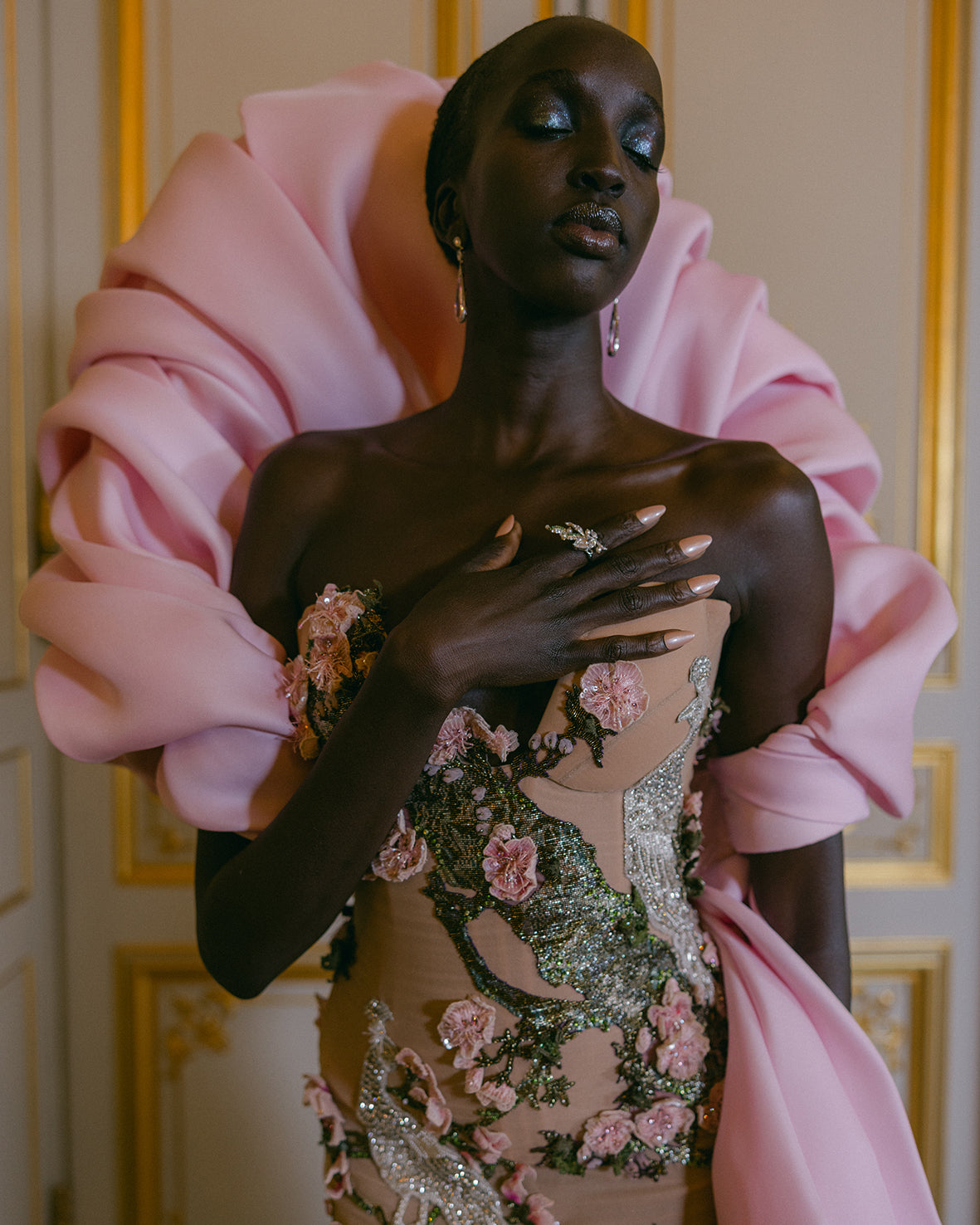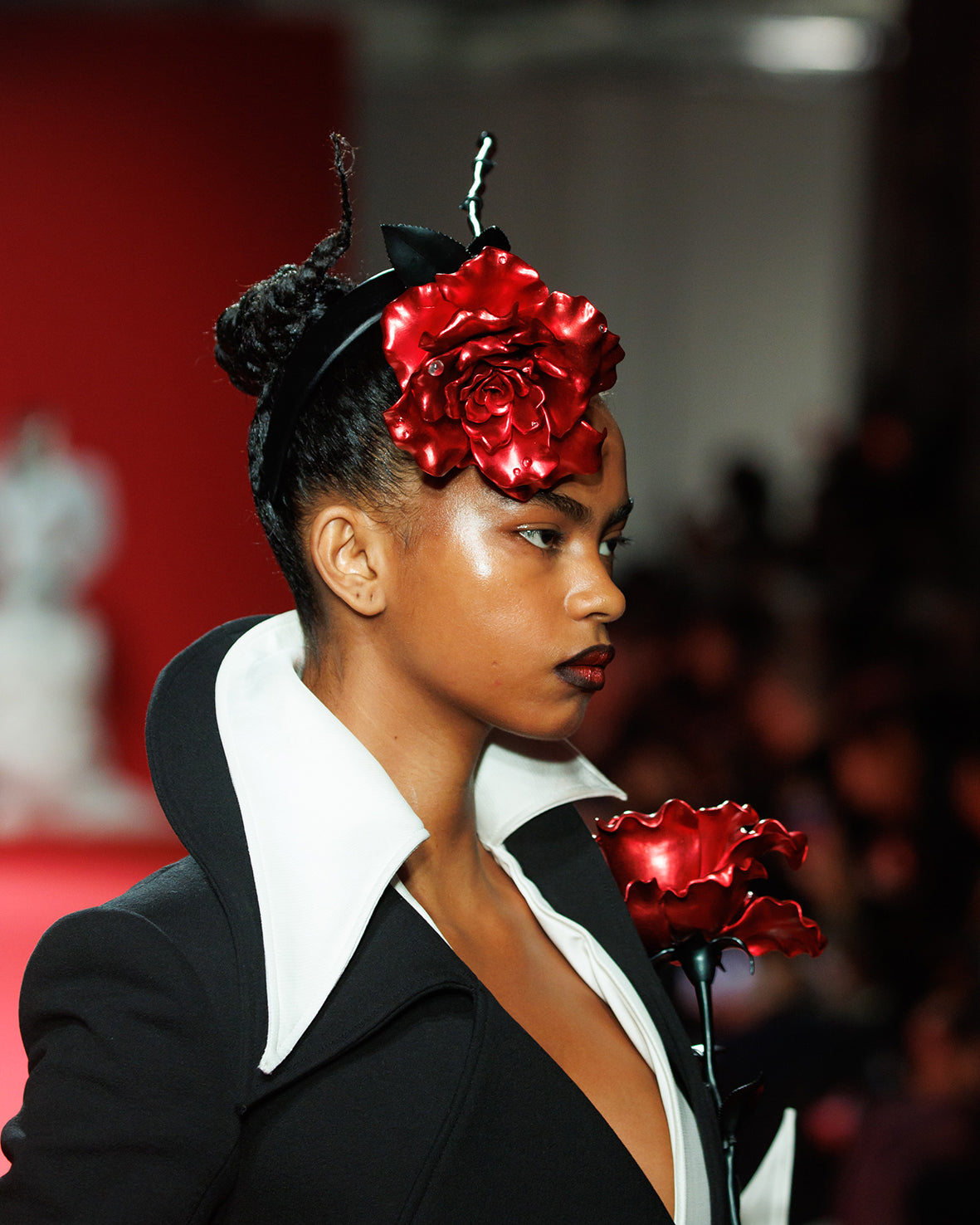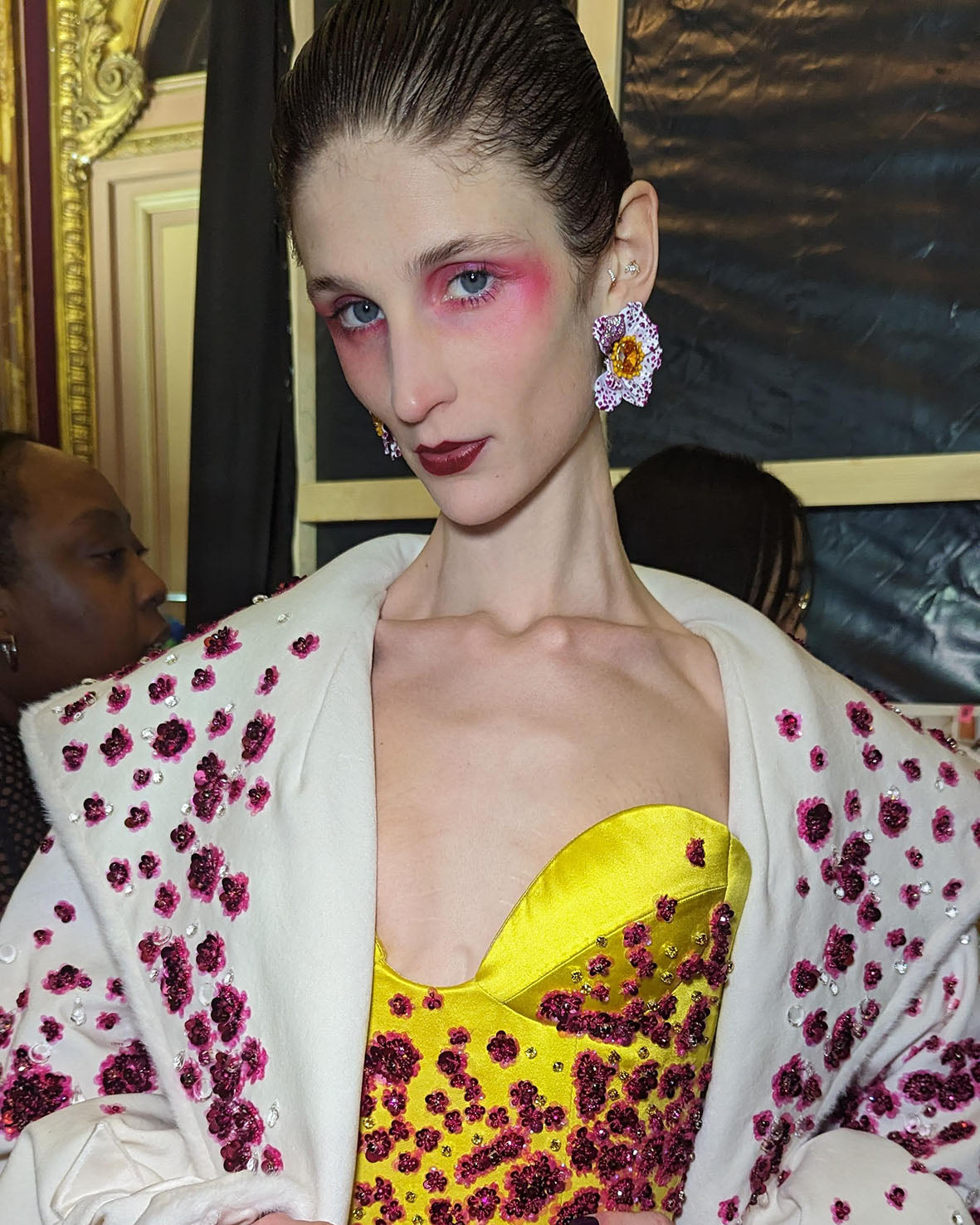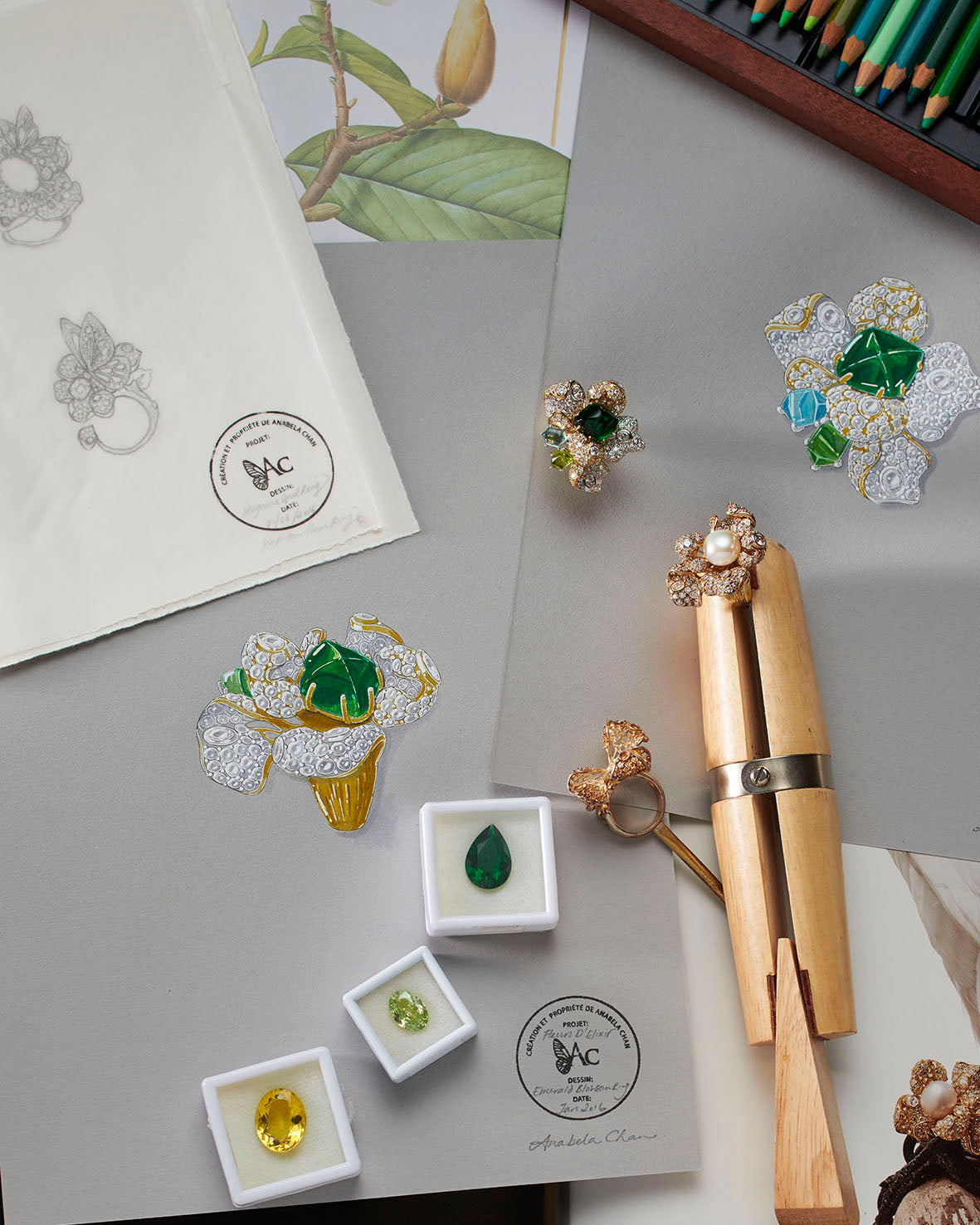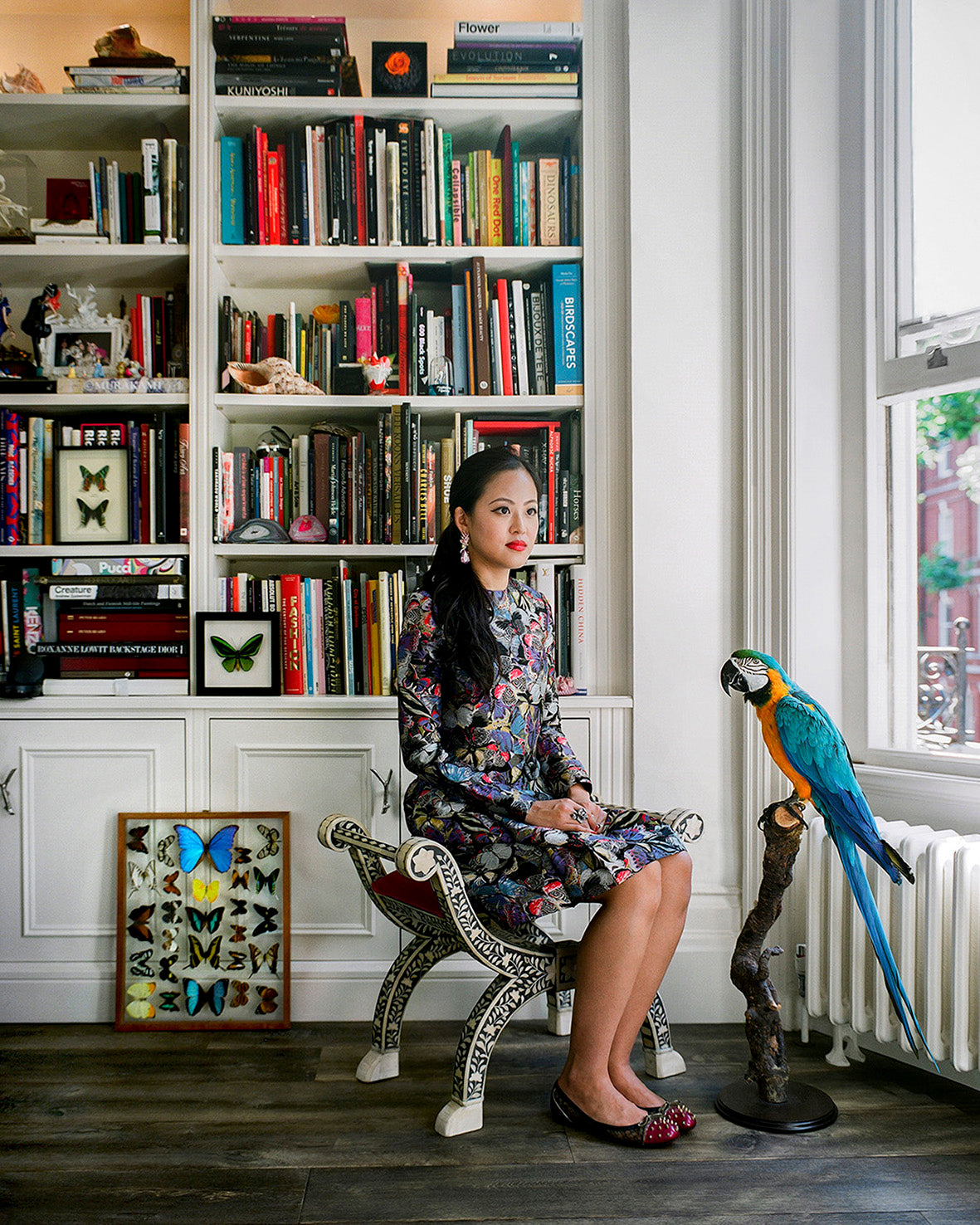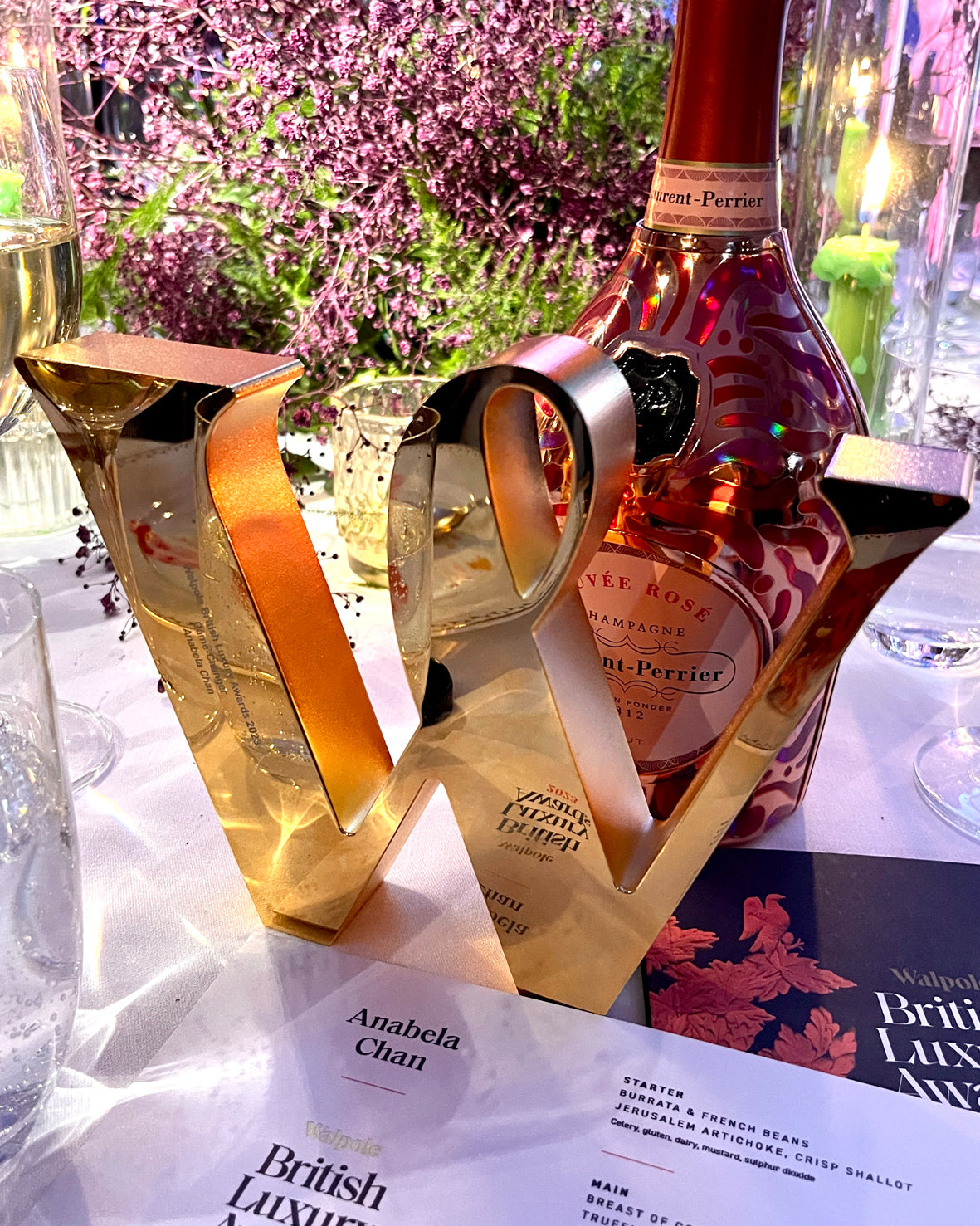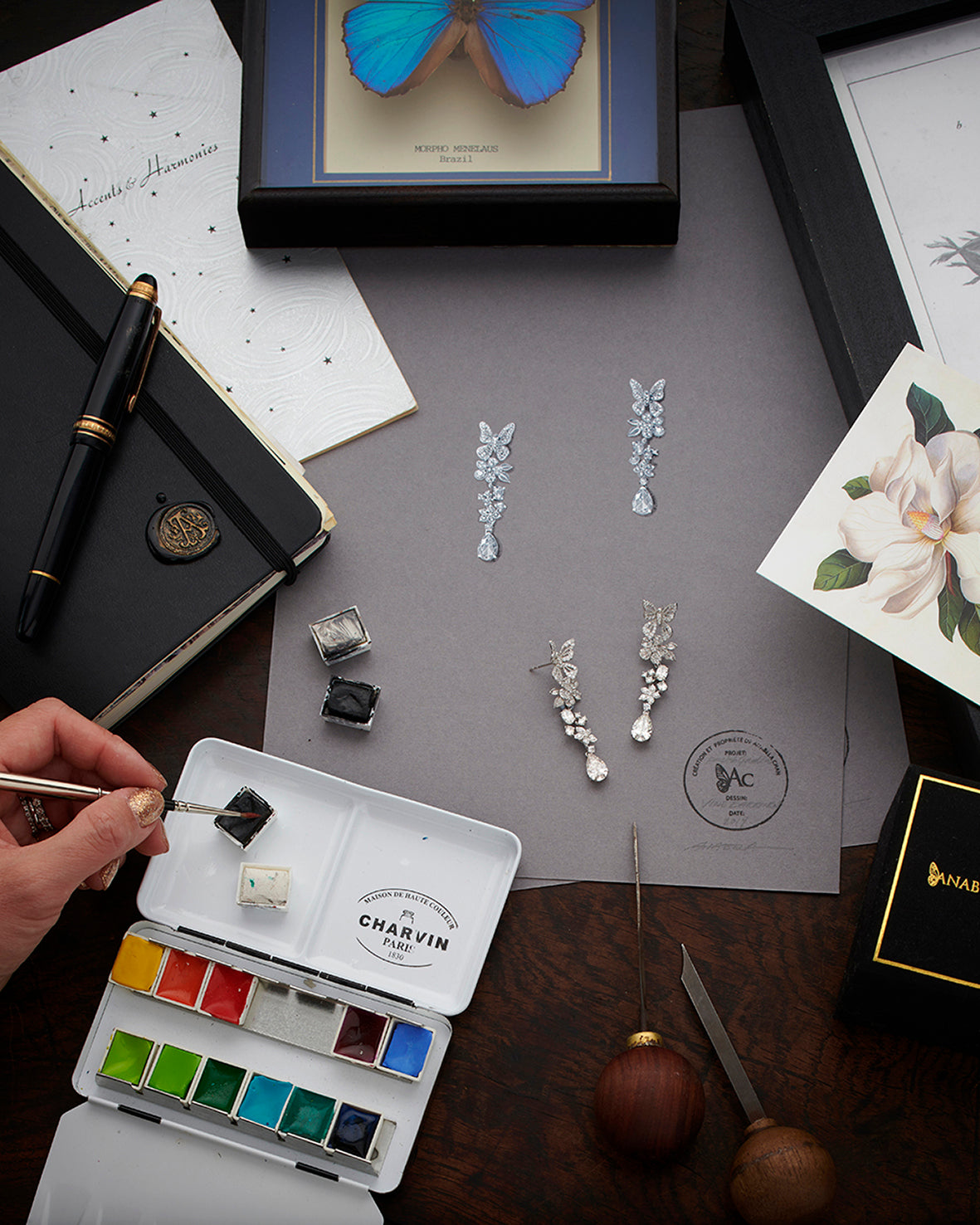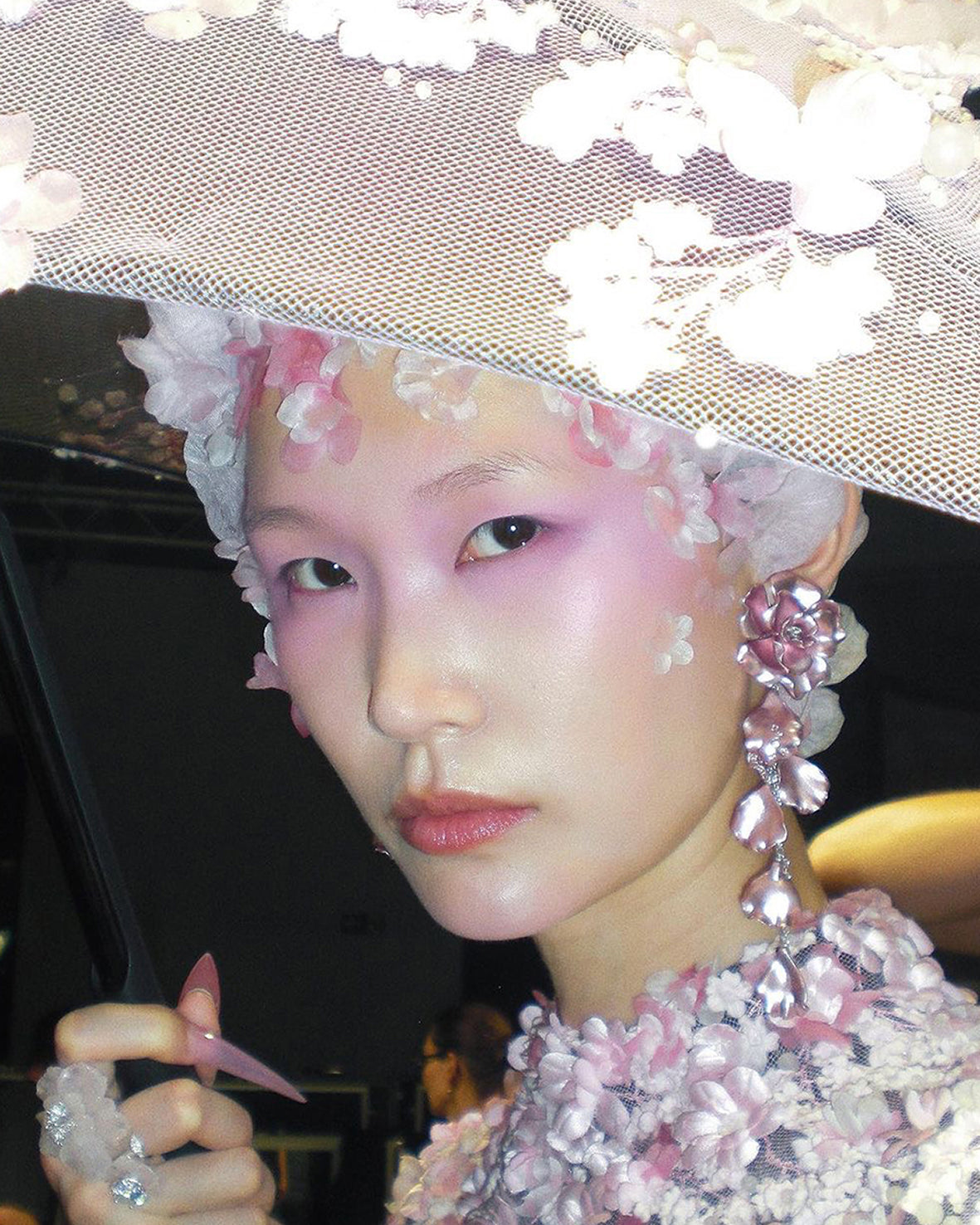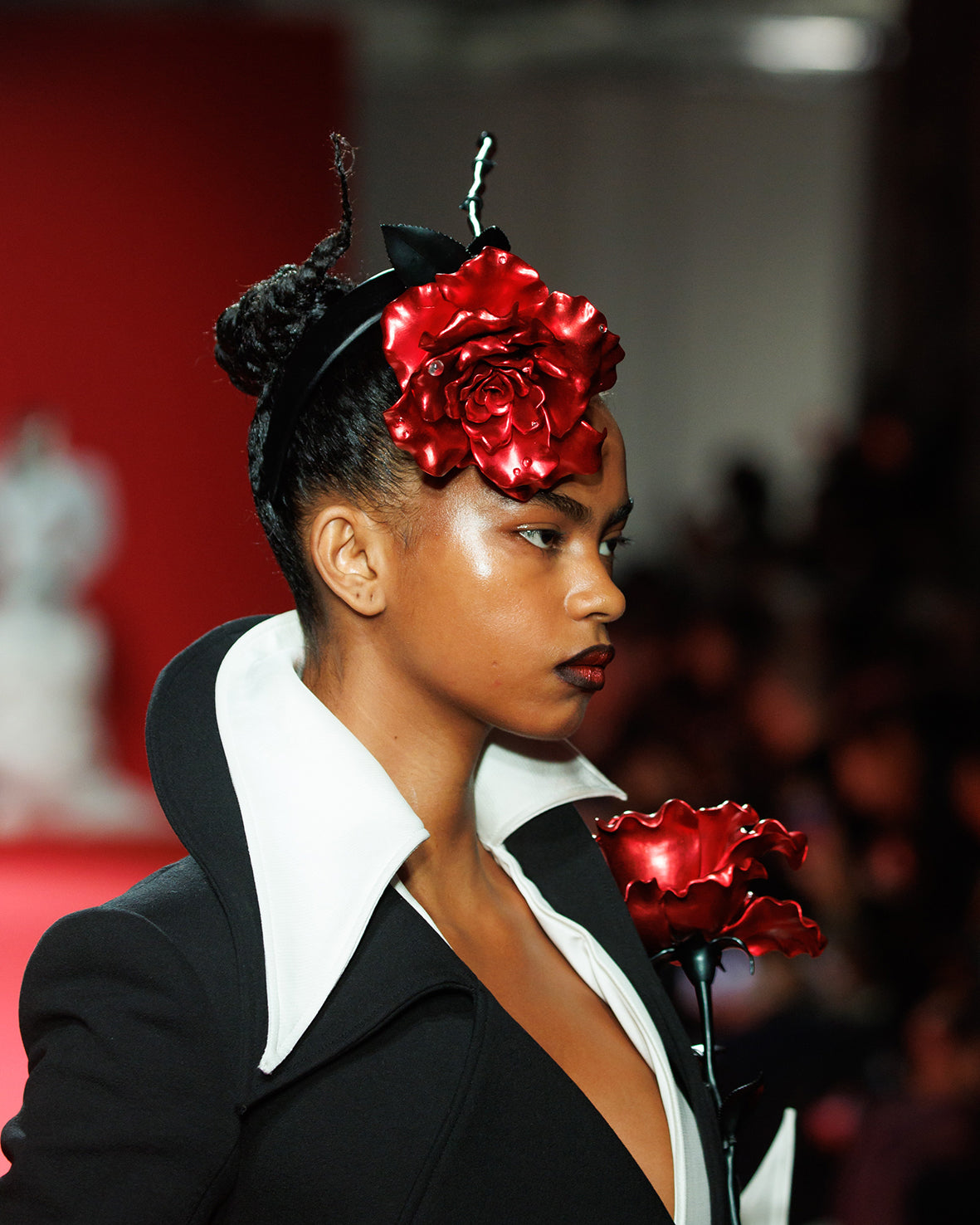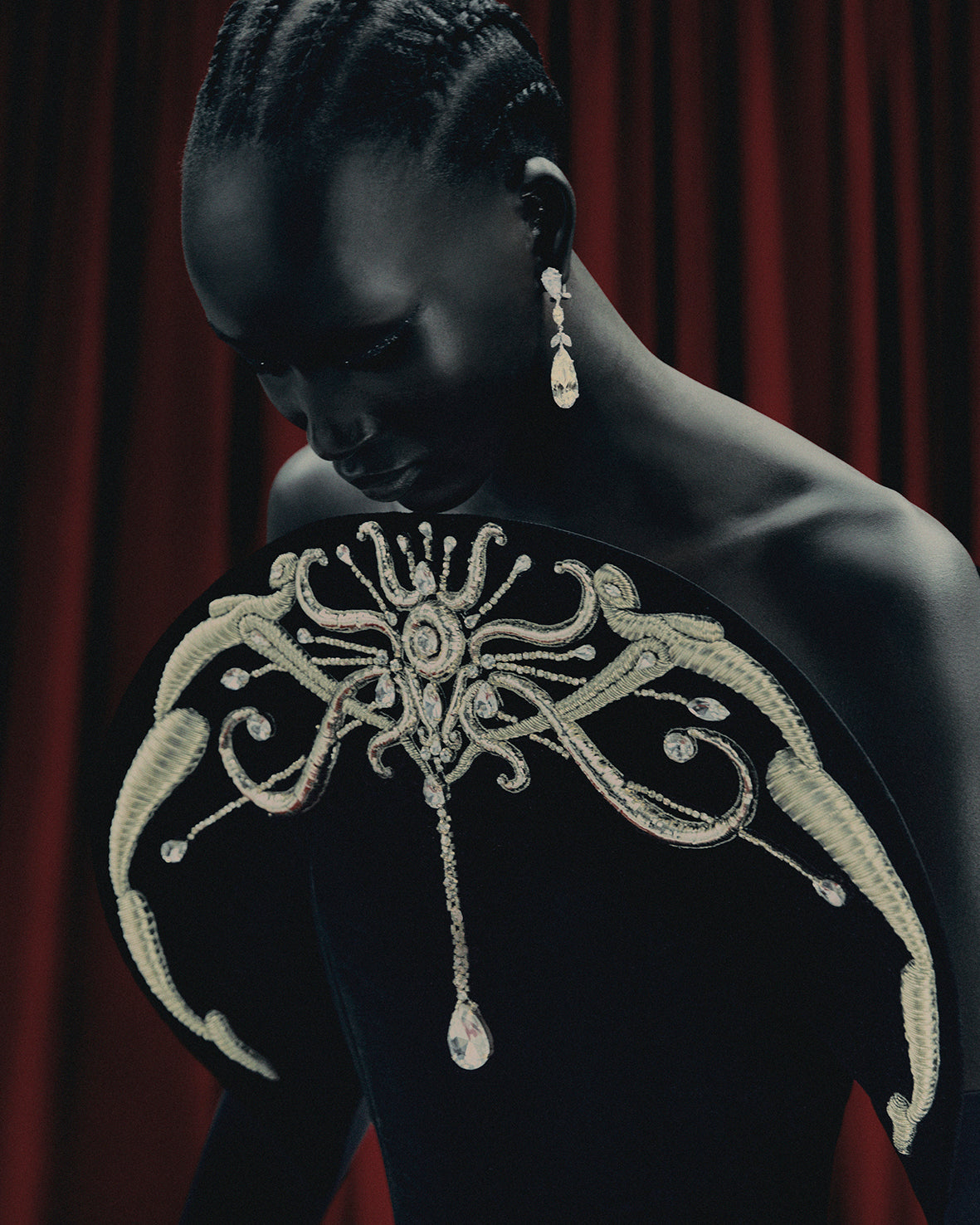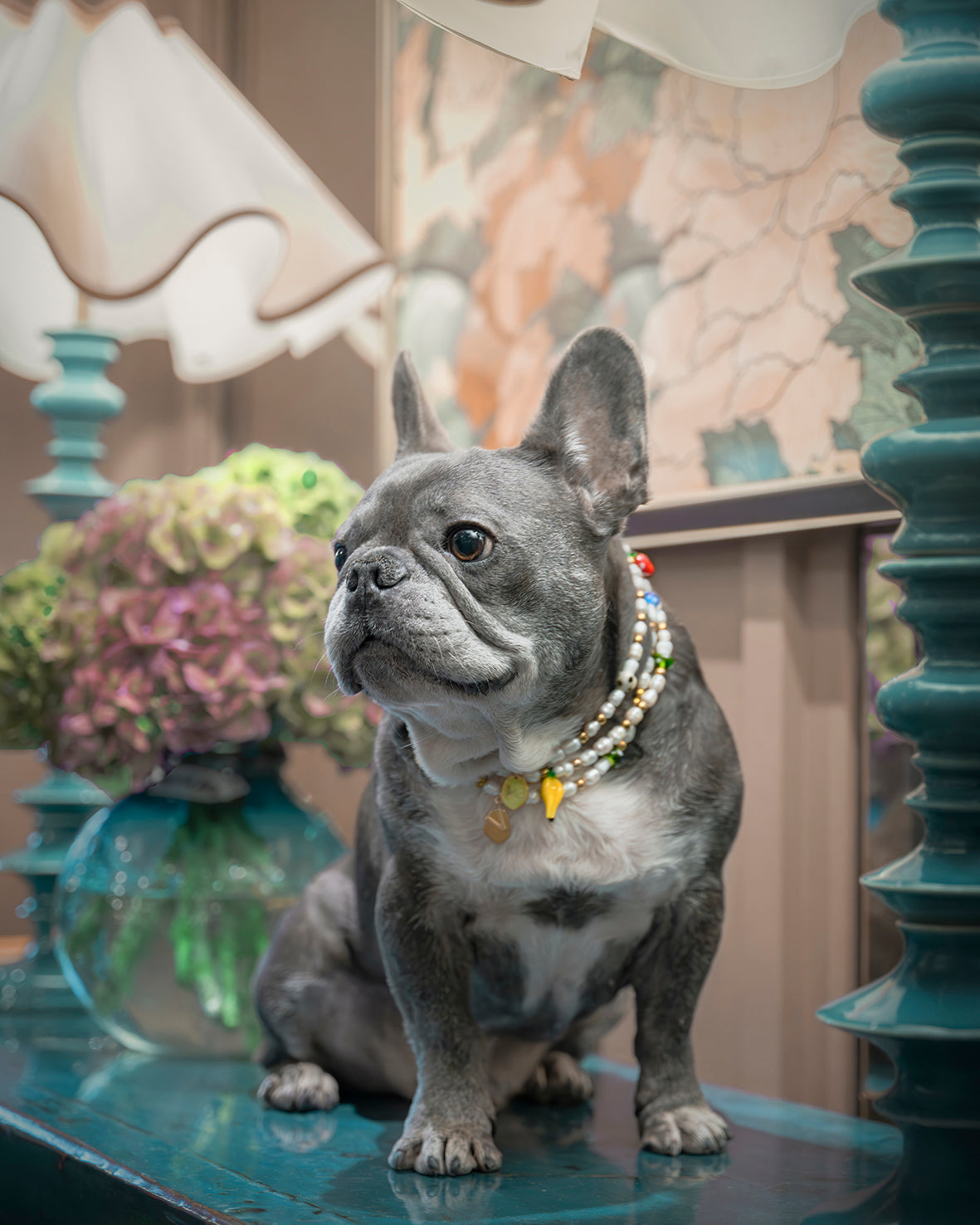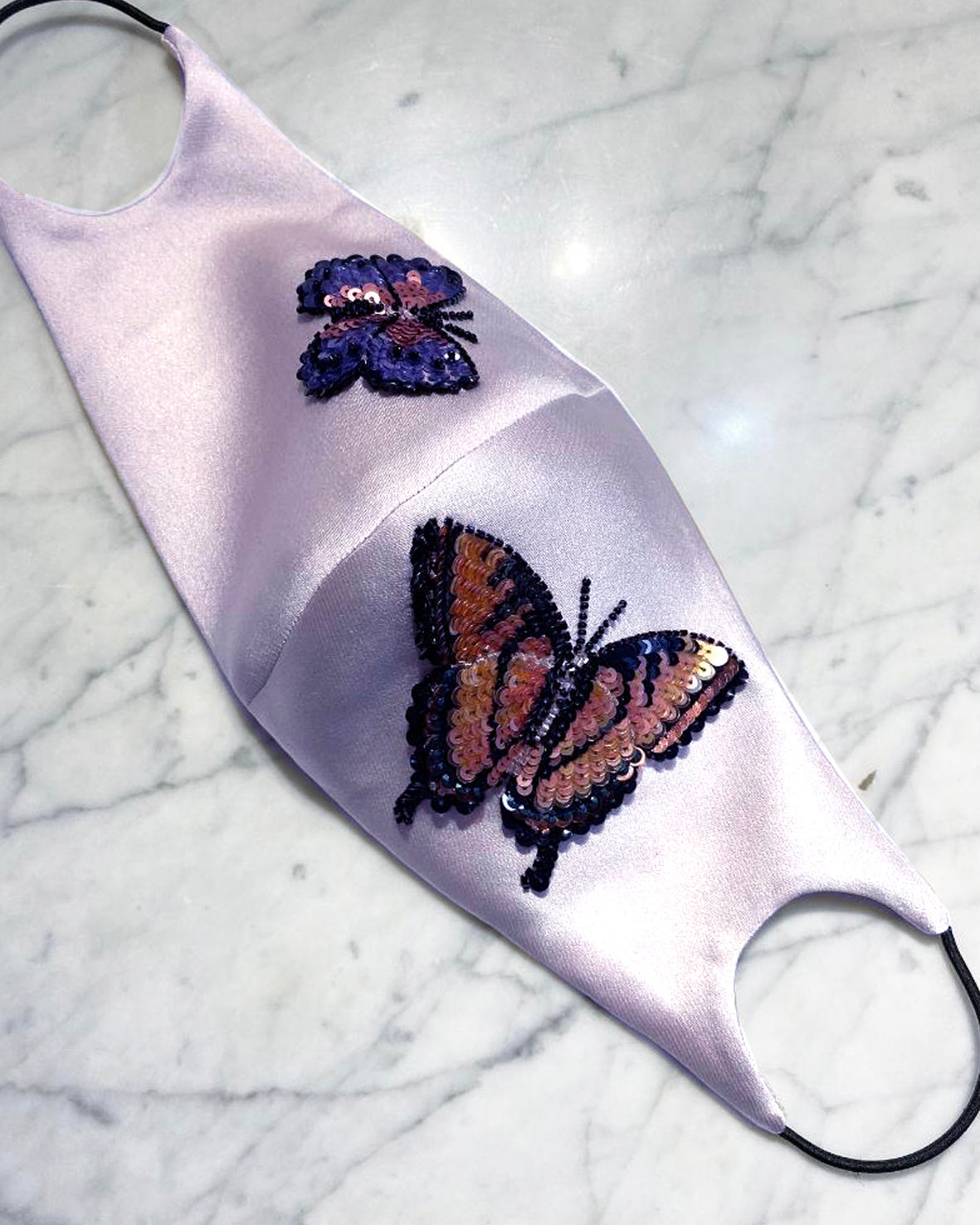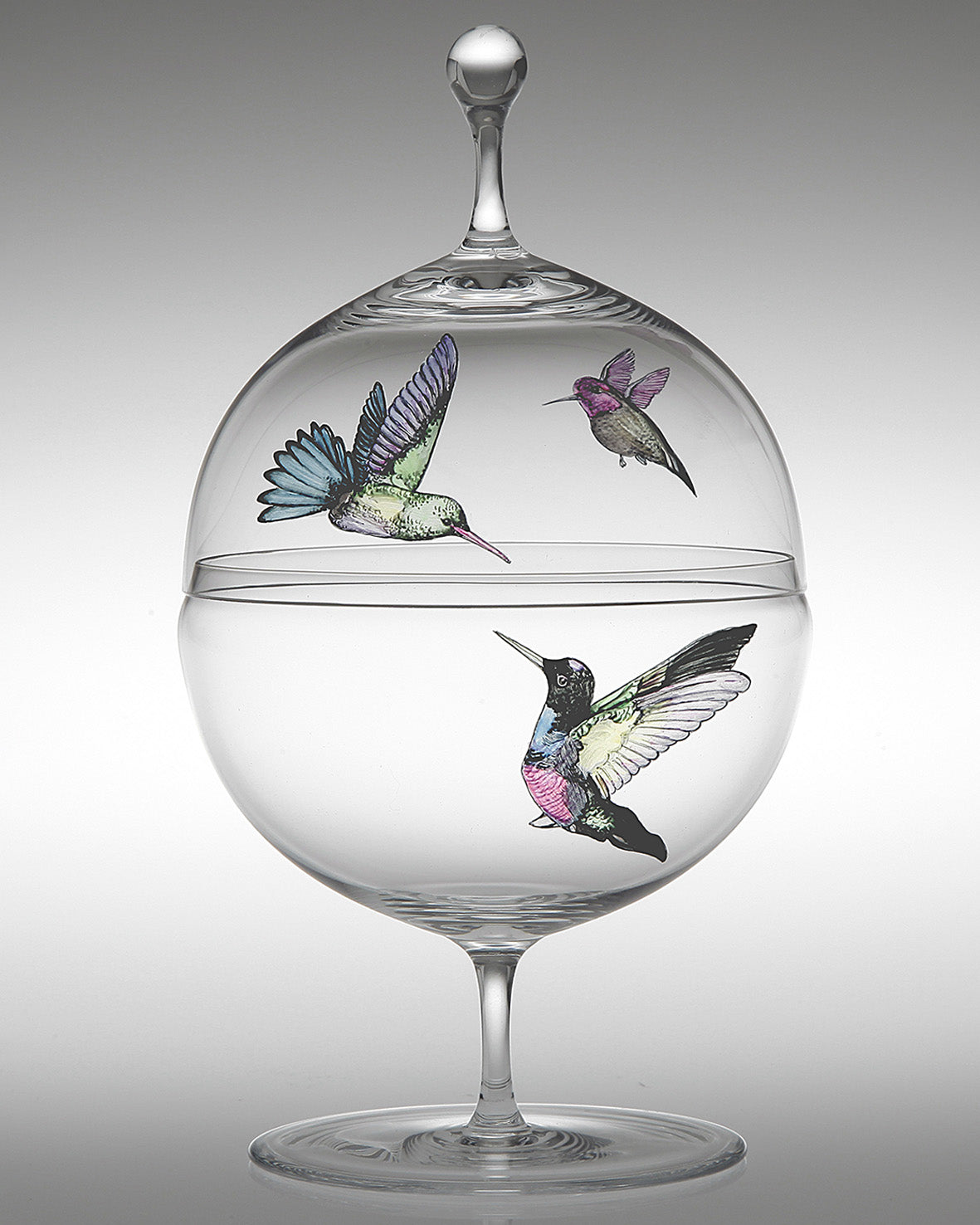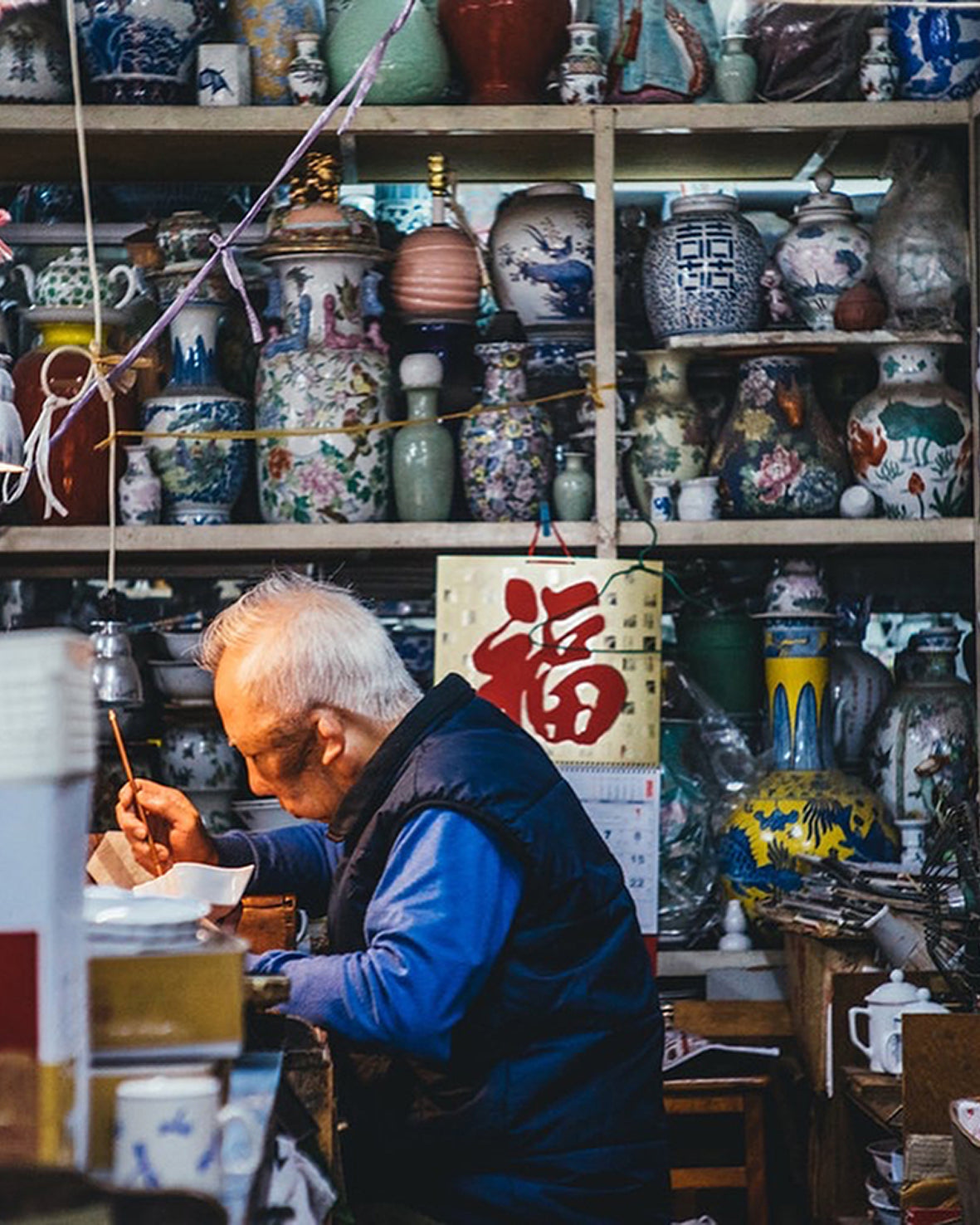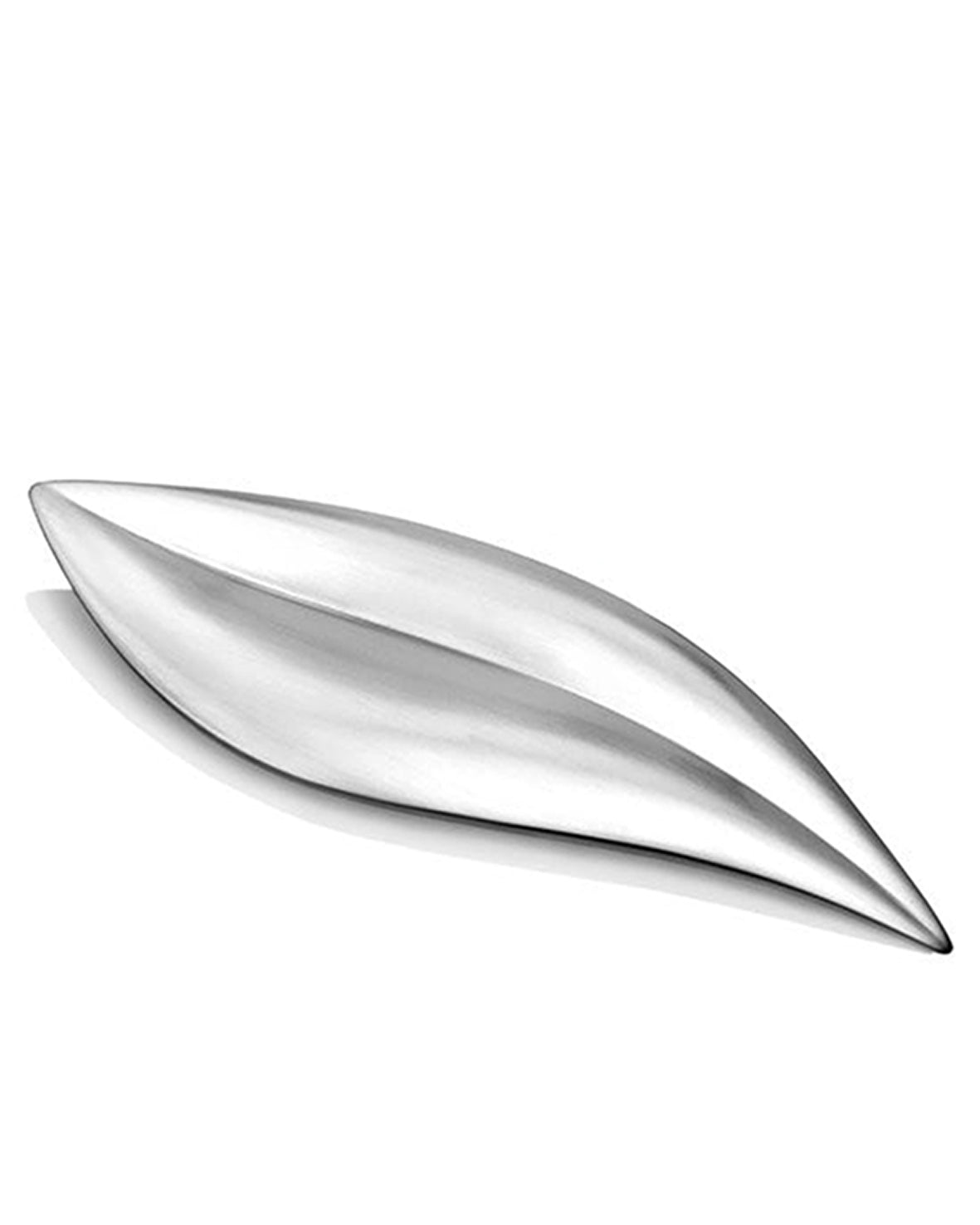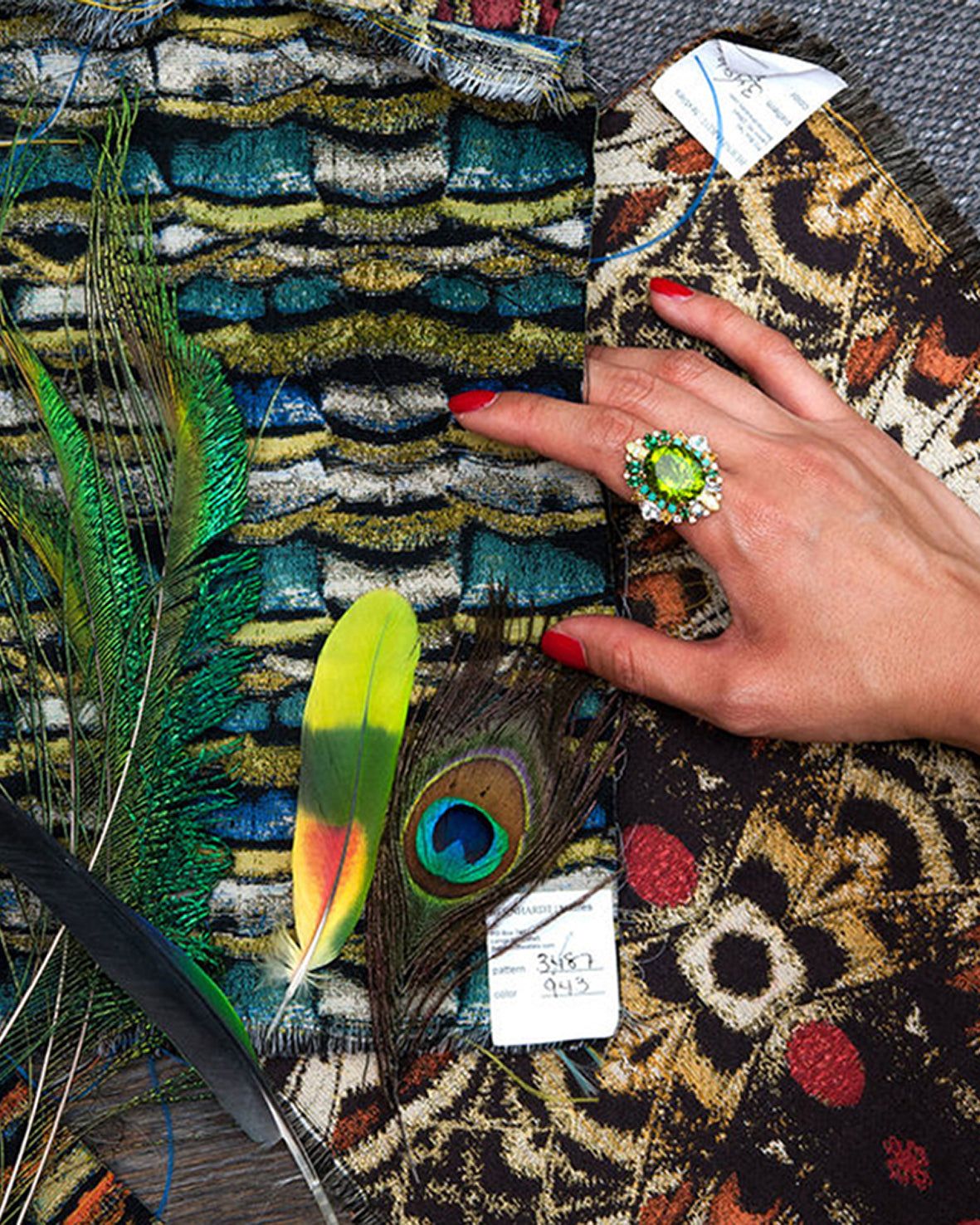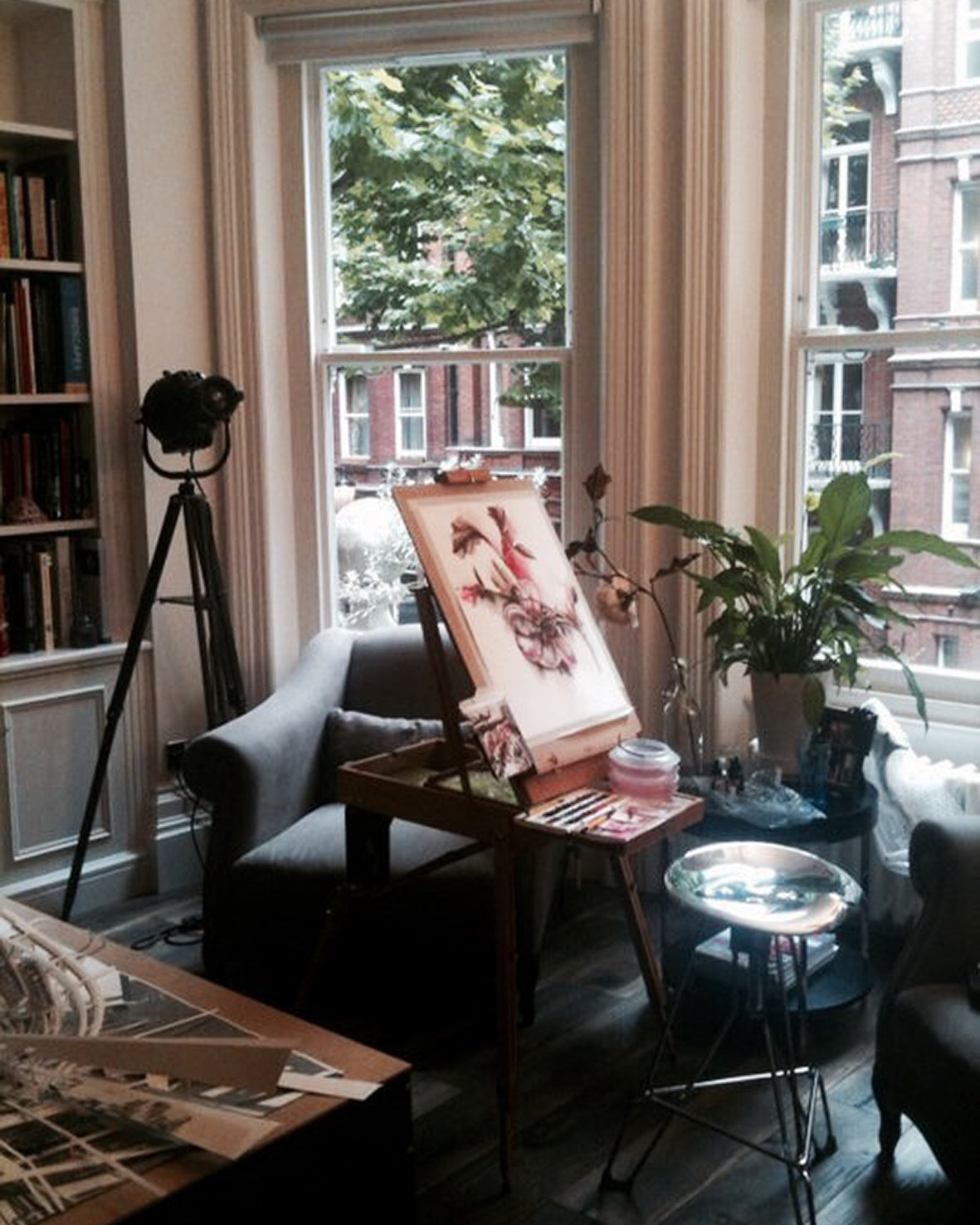Anabela Chan Joaillerie x New Yor Times
Finish Your Soda So She Can Make Some Earrings
The London jewelry designer Anabela Chan is adding 18-karat gold and lab-grown diamonds to up-cycled aluminIum cans.
By MING LIU

Coins, fallen wood and repurposed vintage gemstones — all have found their way into pieces of jewelry. So what’s next in upcycling? Your humble soft-drink can.
That’s the idea behind Blooms, a new floral-theme jewelry collection fashioned from aluminum cans by the London-based designer Anabela Chan. The metal is paired with 18-karat gold, silver and lab-grown diamonds, channelling Ms. Chan’s signature high glamour and love of color — touch points that have earned her fans like Beyoncé, Rihanna and Taylor Swift.
The collection features statement earrings, double-finger rings and oversize brooches, with standouts like the psychedelic Rainbow Magnolia earrings (1,890 pounds, or $2,495) punctuated with canary and white diamonds, peridots, tourmalines and emeralds, and the bold Mandarin Paraiba Bloom ring (£1,290) in vivid turquoise aluminum, matched with a Paraiba tourmaline and a zingy mandarin spessartite garnet.
Aluminum in jewelry is not new — JAR and Hermès are among those to use it — but recycling aluminum from drink cans makes Blooms distinctive in fine jewelry and on trend with sustainability a topic now in every industry from fashion to food.

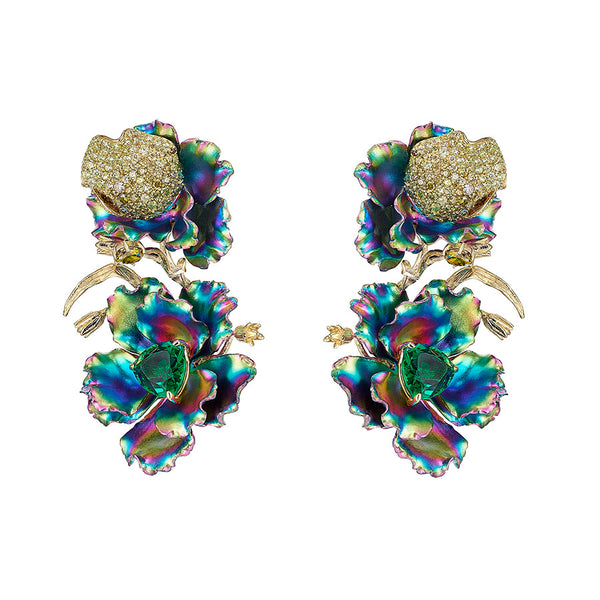
Aluminum is much lighter than gold, an added benefit as, Ms. Chan said, “I like big, dramatic pieces and I’ve always had to battle with the issue of weight, cutting the stones shallower and making the casting more hollow.”
“Aluminum is a humble material, and that’s what makes it circular,” Ms. Chan said. “I love that idea of turning something from trash essentially into treasure.”
- Choosing a selection results in a full page refresh.




